




In-house expertise in all catastrophic cases including carbon monoxide and electrocutions.
Over $25 million in co-counsel settlements in 2022 and more than $1 billion in the firm’s history.
Call us for your next case, 505.832.6363 SpenceNM.com.



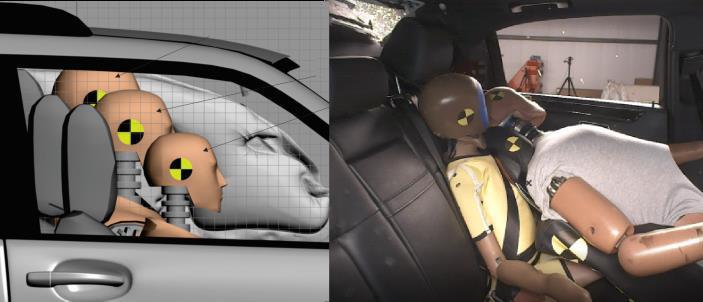

We are excited to announce the N ew Mexico Collaborative Practice Group ’ s 2023 C o-Be st C ollabor ative Practit ioner of the Y ear:

“Collaborative has impacted my professional and personal life in so many positive ways. First and foremost, the relationships/friendships developed with other professionals, most of whom would have only on occasion crossed my path professionally, stand out as a big WIN for me. The Collaborative group provides a wonderful, supportive professional community for me. Finally, the skillset honed and nurtured by working with the other professionals, as well as the trainings the Collaborative group delivers on a regular basis, enhance my ability not only in divorce work but with all my clients outside the scope of divorce. Collaborative makes me a better professional altogether!”
Nominated and elected by the members of the New Mexico Collaborative Practice Group, here’s what they have to say about this year’s winner:
“Renee has brought great value to Collaborative Practice, not only in the work she performs with our clients, but also in her volunteer work in keeping our train on the tracks. She has given the group countless hours in serving as Treasurer for the NMCPG Board and coordinating meetings/trainings. Renee's work is impeccable, and she helps our clients become truly competent in understanding the financial aspects of their divorce. Her bedside manner assists in the clients feeling less fearful and confident in moving forward.”
“Renee has always been compassionate and kind and is the quintessential neutral in every case. She treats all professionals and parties with dignity and respect. In my experience, when Renee is on a case, she is always the most liked person on the team.”
“She makes all parties feel comfortable and is always willing to find a creative solution to the issues at hand. Renee adds so much value to her Collaborative cases and is such a kind human to work with.”
“Renee provides an invaluable resource for parties and attorneys in the Collaborative process. She is thoughtful and knowledgeable, both financially and emotionally.”
“Renee is a very thoughtful financial professional and cares about the Collaborative process…smart and pleasant…she treats the parties with care and compassion and is a pleasure to work with!”

www nmcollaborativedivorce org
“I’m drawn to the creativity and control that Collaborative Practice offers. With Collaborative Divorce, clients, supported by Collaboratively trained counsel, come to the table to maintain open communication and exchange of information. After information is gathered efficiently, we help guide the process for parties to create shared solutions, acknowledging not only a framework based on what the law supports but also assessing individual interests and long-term needs. The Collaborative Divorce process acknowledges that our emotions can drive how we make decisions, both to our benefit, and sometimes to our detriment. This process empowers clients to face the life changes that a divorce brings both financially and emotionally, and helps to lay the foundation for long term financial health, focused on an ability to maintain control and make decisions without litigation and loss of power. The answers are always in the room.”

Nominated and elected by the members of the N ew Mexico Collaborative Practice Group, here’s what they have to say about this year’s winner:
“Emma is a true professional. She consistently looks for ways to find fair and reasonable solutions for all parties. She strives to protect the children of the family and to decrease animosity between the parties. Emma is able to wisely consider her impact on the Team and to have hard and respectful conversations with the professionals on the Team to improve the process. Our community is better because of her leadership.”
“Emma embodies everything that Collaborative Practice stands for! a long-time proponent of Collaborative Divorce, her contributions to the community are unmatched.”
“Emma’s commitment to Collaborative is truly inspiring: whenever she talks about the process her face literally lights up.”
“Emma is deserving of this award because of her ongoing commitment to roll up her sleeves and do the hard work to help her client's see the benefits of out of court settlement. ”
“Emma maintains strong support and belief in the Collaborative Divorce process. She guides her practice in all of its principles. Emma should be given this award for her contributions to the Collaborative effort both now, in the past, and what I'm sure will be far into the future.”

Est. 1886
Officers, Board of Bar Commissioners
Erinna
"Erin" Atkins, President
Aja N. Brooks, President-Elect
Allison H. Block-Chavez, Secretary-Treasurer
Benjamin I. Sherman, Immediate Past President
State Bar Staff
Executive Director, Richard Spinello
Marketing Communications Manager, Celeste Valencia, celeste.valencia@sbnm.org
Graphic Designer, Julie Sandoval, julie.sandoval@sbnm.org
Advertising and Sales Manager, Marcia C. Ulibarri, 505-797-6058, marcia.ulibarri@sbnm.org
Assistant Communications Manager, Brandon McIntyre, brandon.mcintyre@sbnm.org
©2024, State Bar of New Mexico. No part of this publication may be reprinted or otherwise reproduced without the publisher’s written permission. The Bar Bulletin has the authority to edit letters and materials submitted for publication. Publishing and editorial decisions are based on the quality of writing, the timeliness of the article, and the potential interest to readers. Appearance of an article, editorial, feature, column, advertisement or photograph in the Bar Bulletin does not constitute an endorsement by the Bar Bulletin or the State Bar of New Mexico. The views expressed are those of the authors, who are solely responsible for the accuracy of their citations and quotations. State Bar members receive the Bar Bulletin as part of their annual dues. The Bar Bulletin is available at the subscription rate of $125 per year and is available online at www.sbnm.org.
The Bar Bulletin (ISSN 1062-6611) is distributed twice a month by the State Bar of New Mexico, 5121 Masthead St. NE, Albuquerque, NM 87109-4367. The first issue of each month is published and distributed in print and electronically. The second issue of each month is distributed electronically. Periodicals postage paid at Albuquerque, NM. Postmaster: Send address changes to Bar Bulletin, PO Box 92860, Albuquerque, NM 87199-2860.
505-797-6000 • 800-876-6227
Fax: 505-828-3765 • address@sbnm.org
February 14, 2024 • Volume 63, No. 2
www.sbnm.org
About Cover Image and Artist: Her abstract art shimmers with color and texture. The resultant four-decades-long series, The Infinite Moment, is comprised of paintings with layers of textured iridescence build on each other until a nonerosive mesa, a mountain, Mother Earth emerges from the canvas and monumentally rises to meet Father Sky. At its core it honors the sacredness of this union and the need for female and male energies to be in balance. Noel Bennett views these pieces as akin to a visual mantra, each work manifesting the archetypal T. Taw: Interstice of Horizontal & Vertical. Unity out of duality. “Not two but One.” Beauty. Balance. Blessing. Noel Bennett’s recent paintings sum up her life experiences. They are subtitled, simply, I am the Mountain. A traveling museum exhibition, Infinite Moment, is slated for 2025.
Please email notices desired for publication to notices@sbnm.org.
To view recent Supreme Court rulemaking activity, visit the Court's website at https://supremecourt.nmcourts.gov. To view all New Mexico Rules Annotated, visit New Mexico OneSource at https:// nmonesource.com/nmos/en/nav.do.
The Supreme Court Law Library is open to the legal community and public at large. The Library has an extensive legal research collection of print and online resources. The Law Library is located in the Supreme Court Building at 237 Don Gaspar in Santa Fe. Building hours: Monday-Friday 8 a.m.-5 p.m. (MT). Library Hours: Monday-Friday 8 a.m.-noon and 1-5 p.m. (MT). For more information call: 505-827-4850, email: libref@nmcourts.gov or visit https:// lawlibrary.nmcourts.gov.
Learn About Access to Justice in New Mexico in the "Justice for All" Newsletter
Learn what's happening in New Mexico's world of access to justice and how you can participate by reading "Justice for All," the New Mexico Commission on Access to Justice's monthly newsletter! Email atj@nmcourts.gov to receive "Justice for All" via email or view a copy at https:// accesstojustice.nmcourts.gov.
A vacancy on the First Judicial District Court will exist Feb. 1 due to the retirement of the Hon. Judge Sylvia LaMar, effective Jan. 31. Inquiries regarding the details or assignment of this judicial vacancy should be directed to the Administrator of the Court. Applicants seeking information about election or retention if appointed should contact the Bureau of Elections in the Office of the Secretary of State. Camille Carey, Chair of the First Judicial District Court Judicial Nominating Commission, invites applications for this position from lawyers who meet the statutory qualifications in Article VI, Section 28 of the New Mexico Constitution. Applications may be obtained
With respect to other judges:
In all written and oral communications, I will abstain from disparaging personal remarks or criticisms, or sarcastic or demeaning comments about another judge.
from the Judicial Selection website: https:// lawschool.unm.edu/judsel/application.html, or emailed to you by contacting the Judicial Selection Office at akin@law.unm.edu. Applications received after that time will not be considered. The First Judicial District Court Judicial Nominating Commission will convene at 9:30 a.m. (MT) on Feb. 22 to interview applicants for the position at the First Judicial District Court to evaluate the applicants. The Committee meeting is open to the public and members of the public may have the opportunity to provide feedback related to the applicants.
The New Mexico Supreme Court’s Equity and Justice Commission’s Subcommittee on Judicial Nominations has proposed changes to the Rules Governing New Mexico Judicial Nominating Commissions. These proposed changes will be discussed and voted on during the upcoming meeting of the First Judicial District Court Judicial Nominating Commission. The Commission meeting is open to the public beginning at 9:30 a.m. (MT) on Feb. 22 at the First Judicial District Court, located at 225 Montezuma Ave, Santa Fe, N.M. 87501. Please email Beverly Akin (akin@law.unm.edu) if you would like to request a copy of the proposed changes.
Four applications have been received in the Judicial Selection Office as of Feb. 1 for the vacancy on the First Judicial District Court due to the retirement of the Honorable Judge Sylvia LaMar, effective Jan. 31. The First Judicial District Court Judicial Nominating Commission will convene at 9:30 a.m. (MT) on Feb. 22 to interview applicants for the position at the First Judicial District Court, located at 225 Montezuma Ave, Santa Fe, NM 87501. The Committee meeting is open to the public. The applicants for the vacancy include Elizabeth Allen, Marcos D. Martinez, Jose Puentes and Denise Thomas
Notice of Reassignment of Cases
Pursuant to Rule 1-088.1 NMRA, the Second Judicial District Clerk of Court hereby serves notice that a mass reassignment of all cases assigned to the Honorable Benjamin Chavez, Division XIX, will be automatically reassigned to the Honorable Marie Ward, Division XIV, effective Jan. 21. Individual notices will not be sent out. Any party may file a peremptory excusal within ten (10) days the completion of this publication which; the final publication will occur on Feb. 15.
Second Judicial District Court Judicial Nominating Commission
Announcement of Applicants
Four applications have been received in the Judicial Selection Office as of Jan. 29 for the vacancy on the Second Judicial District Court due to the retirement of the Honorable Judge Benjamin Chavez, effective Jan. 20. The applicants for the vacancy include Kevin J. Banville, Rosemary Cosgrove-Aguilar, Dana Garcia and Andrea Gunderson
Third Judicial District Court Judicial Nominating Commission
Announcement of Candidates
The Third Judicial District Court Judicial Nominating Commission convened on Jan. 12 at the Third Judicial District Court and completed its evaluation of the four applicants to fill the vacancy on the Third Judicial District Court due to the resignation of the Honorable Judge Mark Standridge, effective on Dec. 15, 2023. The candidates for the vacancy include Rebecca Duffin , Isabel Jerabek and Jeanne Quintero
The 2024 Bench & Bar Spending Plan has been approved in the amount of
As part of the "Highlighting Pro Bono in New Mexico" Special Insert in the Jan. 24, 2024 issue of the Bar Bulletin, we republished "Volunteering for a Legal Clinic or Pro Bono Case is Easier than Ever," by Judge Erin B. O'Connell and Judge Jane C. Levy, which was originally published in the May 11, 2022 issue of the Bar Bulletin. The article contained some outdated information, as detailed below.
Legal teleclinics are held once per quarter for statewide applicants. New Mexico Legal Aid’s Volunteer Attorney Program coordinates the teleclinics, and the New Mexico State Bar Foundation’s Modest Means Helpline assists teleclinic applicants who are not eligible for NMLA’s services.
In-person legal fairs are held at various times year-round throughout the state in coordination with the individual 13 judicial districts’ pro bono committees and the NMLA Volunteer Attorney Program.
For information regarding volunteering for either teleclinics or legal fairs, watch for emails containing links to volunteer for the specific events or contact:
• NMLA Volunteer Attorney Program: Nedia Isabella (“Bella”) Zayani nediaz@nmlegalaid.org; 505-437-5970; www.vapnm.org
• Modest Means Helpline: Caitlin Carcerano, caitlin.carcerano@sbnm.org; 505-797-6004; www.sbnm.org/Bar-Foundation/Pro-Bono-OpportunitiesNew-Mexico-State-Bar-Foundation/New-Mexico-State-Bar-FoundationVolunteer-Attorney-Pool
$47,200.00 for 8 identified projects. To view the detailed spending plan, please see the “Attorney Information” page on the Court’s website at www.nmd.uscourts.gov.
Bench Trials in Civil Cases
Now In-Person
Bench Trials in civil cases scheduled in the Metropolitan Court on or after February 19, 2024 will now be held inperson at the Courthouse, 401 Lomas Blvd NW, Albuquerque, N.M., 87102, unless otherwise ordered by the judge.
The Access to Justice Fund Grant Commission announces the 2024-2025 Request for Proposals. If your organization intends to apply for an Access to Justice Fund Grant, send an email to Donna Smith at donna.smith@sbnm. org and provide a statement of intent to apply, the organization contact person and his/her email, telephone number and mailing address. Please submit your
organization’s intent to apply by Feb. 15. Donna will respond by email acknowledging receipt of the intent to apply and provide the application materials. Upon notification of a statement of intent to apply, prospective applicants will receive application materials and any further instructions, copies of all of the questions asked by potential applicants and the question responses. Submitting an "Intent to Apply" does not obligate your organization to submit an application, but you should notify Donna by email if you decide not to apply.
Do you have specific questions about equity and inclusion in your workplace or in general? Send in questions to Equity in Justice Program Manager Dr. Amanda Parker. Each month, Dr. Parker will choose one or two questions to answer for the Bar Bulletin. Go to www. sbnm.org/eij, click on the Ask Amanda link and submit your question. No question is too big or too small.

Fastcase is a free member service that includes cases, statutes, regulations, court rules and constitutions. This service is available through www.nmbar.org. Fastcase also offers free live training webinars. Visit www.fastcase.com/webinars to view current offerings. Reference attorneys will provide assistance from 8 a.m. to 8 p.m. ET, Monday–Friday. Customer service can be reached at 866-773-2782 or support@fastcase. com. For more information, contact info@nmbar.org.
The Monday Night Attorney Support Group meets at 5:30 p.m. (MT) on Mondays by Zoom. This group will be meeting every Monday night via Zoom. The intention of this support group is the sharing of anything you are feeling, trying to manage or struggling with. It is intended as a way to connect with colleagues, to know you are not in this alone and feel a sense of belonging. We laugh, we cry, we BE together. Join the meeting via Zoom at https://bit.ly/ attorneysupportgroup.
The NM LAP Committee will meet at 4 p.m. (MT) on April 4, July 11 and Oct 11, 2024. The NM LAP Committee was originally developed to assist lawyers who experienced addiction and substance abuse problems that interfered with their personal lives or their ability to serve professionally in the legal field. The NM LAP Committee has expanded their scope to include issues of depression, anxiety,
and other mental and emotional disorders for members of the legal community. This committee continues to be of service to the New Mexico Lawyer Assistance Program and is a network of more than 30 New Mexico judges, attorneys and law students.
The N.M. Well-Being Committee was established in 2020 by the State Bar of New Mexico's Board of Bar Commissioners. The N.M. Well-Being Committee is a standing committee of key stakeholders that encompass different areas of the legal community and cover state-wide locations. All members have a well-being focus and concern with respect to the N.M. legal community. It is this committee’s goal to examine and create initiatives centered on wellness. The Well-Being Committee will meet the following dates at 3:00 p.m. (MT) in 2024: March 26, May 28, July 30, Sept. 24 and Nov 26. Email Tenessa Eakins at Tenessa.Eakins@sbnm. org or Amanda Gandara at Amanda. gandara@sbnm.org for the Zoom link.
Presented by the New Mexico Lawyer Assistance Program, the Solutions Group, the State Bar’s Employee Assistance Program (EAP), extends its supportive reach by offering up to four
complimentary counseling sessions per issue, per year, to address any mental or behavioral health challenges to all SBNM members and their direct family members. These counseling sessions are conducted by licensed and experienced therapists. In addition to this valuable service, the EAP also provides a range of other services, such as management consultation, stress management education, webinars, critical incident stress debriefing, video counseling, and a 24/7 call center. The network of service providers is spread across the state, ensuring accessibility. When reaching out, please make sure to identify yourself with the NM LAP for seamless access to the EAP's array of services. Rest assured, all communications are treated with the utmost confidentiality. Contact 505-254-3555 to access your resources today.
The New Mexico State Bar Foundation and its partner legal organizations gratefully welcome attorneys and paralegals to volunteer to provide pro bono service to underserved populations in New Mexico. For more information on how you can help New Mexican residents through legal service, please visit www.sbnm.org/ probono.
The Law Library is happy to assist attorneys via chat, email, or in person by appointment from 8 a.m.-8 p.m. (MT) Monday through Thursday and 8 a.m.-6 p.m. (MT) on Fridays. Though the Library no longer has community computers for visitors to use, if you bring your own device when you visit, you will be able to access many of our online resources. For more information, please see lawlibrary. unm.edu.
Nominations close on Feb. 15. To nominate an individual, please go to https:// lawschool.unm.edu/alumni/events/daad. html. For questions, please contact lynn. taylor@law.unm.edu.
New Mexico
Department of Justice Rebranding from "Office of the Attorney General"
The Office of the Attorney General is rebranding as the New Mexico Department of Justice (NMSA 1978 Section 8-5-1). For more information about the New Mexico Department of Justice and its operations, visit www.nmdoj.gov.

Dear Members of the State Bar:
I am humbled and honored to introduce myself to you as the 2024 President of the State Bar of New Mexico. As I begin my term, I want to take a moment to recognize this momentous occasion. The State Bar of New Mexico was originally formed in 1886 as a bar association for the territory. I am the first woman from Alamogordo to have the opportunity to serve as President of the State Bar of New Mexico. Not only is this an achievement for Alamogordo—my hometown and community that I love and cherish —it is another milestone on behalf of women in New Mexico. I am inspired by previous Presidents, and I wish to acknowledge and thank the women who have encouraged me when they served in this role; specifically, Carolyn A. Wolf in 2022, Carla C. Martinez in 2021 and Ernestina R. Cruz in 2020. These individuals, in addition to our esteemed Justices on the New Mexico Supreme Court, continue to provide me with inspiration, and I carry the knowledge that I walk in steps taken by great leaders who have provided me a chance to make history.
I take those first steps with admiration for our Immediate Past President, Benjamin I. Sherman. It is from his dedication to our membership and his leadership during 2023 that we move forward into 2024. As I reflect on his success, I am inspired to maintain the State Bar’s devotion to New Mexico’s legal community, and I look forward to continuing the exciting new initiatives and work of the State Bar of New Mexico. I also thank Ben for his friendship, guidance, and support.
Turning to our future, I wish to extend my gratitude further to those who volunteer on our Committees. Part of what makes our membership so strong is the engagement we see from our members. That engagement takes shape in many forms, but today I specifically wish to highlight our prestigious Committees. They are voluntary members from diverse backgrounds. These members give of their time and talents to New Mexico and their contributions are invaluable. As we begin the New Year, I am grateful to honor the significance of these Committees. Their passion for our community and the work they do for our State deserves recognition. With the help of the State Bar’s Member Services Committee, which supports the effectiveness of the Committees’ activities and operations, I recognize the work of each member of every Committee and wish to thank them for their, often years, of service. Throughout 2024, I hope to continue to acknowledge the fundamental importance of the State Bar of New Mexico’s Committees.
The Annual Meeting has traditionally been one of the State Bar’s most treasured forms of membership engagement. Each year, the Annual Meeting serves as an all-inclusive opportunity for members to socialize, network, learn and celebrate their achievements. The 2024 Annual Meeting’s theme is “Be Inspired” and will be conveniently located at the State Bar Center in Albuquerque for the condensed one-day event on Friday, October 25, 2024. There will be an option to attend the Annual Meeting either in-person or to attend virtually from the comfort of your home or office; the agenda is full of truly inspiring speakers and CLE courses, along with time to network within the legal community. One of the most exciting features of this year’s Annual Meeting is
that attendees will have the opportunity to complete all their required CLEs for the entire year by attending the CLEs during the event, as well as gaining access to free on-demand CLEs to complete on their own time! The goal of this year’s Annual Meeting is for every attendee to leave the event inspired and with a renewed energy towards completing their professional goals. I hope with the option to attend virtually, or to choose to come in-person to celebrate at the State Bar Center, you will take advantage of all this event has to offer.
While I am committed to encouraging and supporting member engagement, I am also pursuing adding practical tools for attorneys to use in navigating their legal practice. I hope this year will bring each of you a new opportunity to make your practice of law stronger and increase the enjoyment you have in your work. The State Bar of New Mexico and those with whom we collaborate, provide ample tools designed to help you streamline your day-to-day practice. However, there are always more opportunities for us to add conveniences and explore how to increase attorney effectiveness through access to information and other useful supplements. What does the State Bar do for me? I hope to answer that question in 2024 many times over.
As we celebrate Black history month, I especially want to acknowledge our President Elect, Aja Brooks, who is slated to serve as President in 2025 and will do so as the first Black President of the State Bar of New Mexico. She recently received the prestigious honor of being the keynote speaker at the 39th annual UNM Black History Month Kickoff Brunch. In doing so, she joined the ranks of previous speakers such as Rosa Parks, Dr. Maya Angelou, and Reverend Al Sharpton to name a few. I attended the brunch with our Executive Director, Richard Spinello, and was in awe of Aja as she led the audience through a thoughtful, humorous, and moving speech of her own life history and lessons. Aja continues to be an inspiration to all who know her and we celebrate in her success!
Congratulations Aja!
In closing, I’d like to acknowledge the passing of United States Supreme Court Justice Sandra Day O’Connor. As the first woman on the United States Supreme Court, she has left an indelible mark on our country’s history and on the legal profession serving in our highest court and thereby creating opportunities for women to be welcome at the table and in the courtroom. She was truly an inspiration for which I shall continue to be grateful. I look forward to this year.
Sincerely,
Erinna M. “Erin” Atkins, President State Bar of New Mexico1-29 Self-Study - Tools for Creative Lawyering: An Introduction to Expanding Your Skill Set 1.0 G, 2.0 EP
Online On-Demand
The Ubuntuworks Project www.ubuntuworksschool.org
14 Real Estate Finance:
‘Back to the Old Normal’ Part 1 1.0 G
Teleseminar
Center for Legal Education of NMSBF www.sbnm.org
15 Real Estate Finance: ‘Back to the Old Normal’ Part 2 1.0 G
Teleseminar
Center for Legal Education of NMSBF www.sbnm.org
15 Virtual Magic: Making Great Legal Presentations Online 1.0 G
Webinar
Center for Legal Education of NMSBF www.sbnm.org
1 Elimination of Bias - Combating Age Bias in the Legal Field
1.0 EIJ
Webinar
Center for Legal Education of NMSBF www.sbnm.org
1-3 Collaborative Family Law
10.0 G, 0.5 EP
Live Program
UNM School of Law lawschool.unm.edu
5 New Mexico Water Rights Fundamentals
4.0 G
In-Person at the State Bar Center WaterCourse CLE www.watercoursecle.com
16 Family Disputes & Trusts: Practical Strategies to Preserve Family Wealth
1.0 G
Teleseminar
Center for Legal Education of NMSBF www.sbnm.org
21 2024 Basics of Trust Accounting: How to Comply with Disciplinary Board Rule 17-204
1.0 EP
Webinar
Center for Legal Education of NMSBF www.sbnm.org
21 Trust and Estate Planning for Family Businesses Part 1
1.0 G
Teleseminar
Center for Legal Education of NMSBF www.sbnm.org
22 Trust and Estate Planning for Family Businesses Part 2
1.0 G
Teleseminar
Center for Legal Education of NMSBF www.sbnm.org
1-31 Self-Study - Tools for Creative Lawyering: An Introduction to Expanding Your Skill Set
1.0 G, 2.0 EP
Online On-Demand
The Ubuntuworks Project www.ubuntuworksschool.org
1-3, Taking and Defending Depositions
22-24
31.0 G, 4.5 EP
Live Program
UNM School of Law, lawschool.unm.edu
22 Twenty-First National Seminar on the Development and Presentation of Mitigating Evidence in Capital
16.1 G, 1.0 EP
Live Program
Administrative Office of the U.S. Courts www.uscourts.gov
23 The Mindful Approach to Addressing Mental Health Issues in the Legal Field
1.0 EP
Webinar
Center for Legal Education of NMSBF www.sbnm.org
27 Practical Tips & Strategies To Combat Implicit Biases In Law Firms and Society
1.0 EIJ
Webinar
Center for Legal Education of NMSBF www.sbnm.org
28 Key Frameworks and Foundations in Equity in Justice Work
1.0 EIJ
Webinar
Center for Legal Education of NMSBF www.sbnm.org
5 Take Ethical Security Precautions with Email: When and How to Encrypt
1.0 EP
Webinar
Center for Legal Education of NMSBF www.sbnm.org
21 Citizenship & Residency Workshop
In-Person
New Mexico Immigrant Law Center
www.nmilc.org/citizenship
Location: El Centro de Igualidad y Derechos
1 Law-La-Palooza
In-Person
New Mexico Legal Aid bit.ly/NMLALegalFairSignUp
Location: Albuquerque
8 Legal Fair
In-Person
New Mexico Legal Aid bit.ly/NMLALegalFairSignUp
Location: Roswell
20 Citizenship & Residency Workshop
In-Person
New Mexico Immigrant Law Center
www.nmilc.org/citizenship
Location: El Centro de Igualidad y Derechos
5 Legal Fair
In-Person
New Mexico Legal Aid bit.ly/NMLALegalFairSignUp
Location: Socorro
6 Citizenship & Residency Workshop
In-Person
New Mexico Immigrant Law Center www.nmilc.org/citizenship
Location: El Centro de Igualidad y Derechos
14 Asylum Initial Application and Work Permit Pro Se Clinic
In-Person
New Mexico Immigrant Law Center
New Mexico Legal Aid
www.nmilc.org/asylum
Location: Announced prior to clinic
7 Economic Justice Workshop
In-Person/Remote
New Mexico Immigrant Law Center
www.nmilc.org/economic-justice
Location: NMILC
16 Legal Resources for the Elderly Workshop
Virtual
State Bar of New Mexico
Call 505-797-6005
or 1-800-876-6657 to register
Location: Virtual
9 Legal Resources for the Elderly Workshop
Virtual
State Bar of New Mexico
Call 505-797-6005
or 1-800-876-6657 to register
Location: Virtual
FORMAL OPINION: 2024- 001
TOPIC: Practicing Law “Virtually1”
RULES IMPLICATED: Rules 16-101, 16-103, 16-104, 16106, 16-501, 16-503, 16-505, 16-701 and 16-804 NMRA (2021).
DATE ISSUED: January 17, 2024
DISCLAIMER FOR FORMAL OPINIONS: The Ethics Advisory Committee of the State Bar of New Mexico (“Committee”) is constituted for the purpose of advising lawyers on the application of the New Mexico Rules of Professional Conduct in effect at the time the opinion is issued (“Rules”). One way in which the Committee attempts to advise lawyers is through “formal opinions,” which are published. In issuing formal opinions, the conclusions are based upon any facts that are referenced in the opinion. Lawyers are cautioned that should the Rules subsequently be revised, or different facts be presented, a different conclusion may be appropriate. The Committee does not opine on matters of substantive law although concerns regarding substantive law are sometimes raised in the opinions. The Committee’s opinions are advisory only, and are not binding on lawyers, the disciplinary board, or any tribunal. The statements expressed in this opinion are the consensus of the Committee members who considered the question(s) presented, based upon the Rules in effect on the date issued.
May a lawyer licensed in New Mexico practice in New Mexico through technology while physically located in another state or country?
• Under the New Mexico Rules of Professional Conduct, yes, they may; however, if such practice violates the rules of the jurisdiction in which the lawyer is physically located, this would also be a violation of the New Mexico Rules.
• As practicing remotely raises additional issues under the New Mexico Rules of Professional Conduct, those are highlighted here as well.
ANALYSIS:
The ABA aptly describes an ever-increasing scenario, sped up by choice and necessity during COVID:
“Lawyers, like others, have more frequently been working remotely: practicing law mainly through electronic means. Technology has made it possible for a lawyer to practice virtually in a jurisdiction where the lawyer is licensed, providing legal services to residents of that jurisdiction, even though the lawyer may be physically located in a different jurisdiction where the lawyer is not licensed. A lawyer’s residence may not be the same
jurisdiction where a lawyer is licensed. Thus, some lawyers have either chosen or been forced to remotely carry on their practice of the law of the jurisdiction or jurisdictions in which they are licensed while being physically present in a jurisdiction in which they are not licensed to practice.” ABA Formal Opinion 495 (2020).
In general, lawyers do not have to live in the state in which they are licensed, and admission to practice cannot be restricted to state residents. See Supreme Court of New Hampshire v. Piper, 470 U.S. 274 (1985); see also Supreme Court of Virginia v. Friedman, 487 U.S. 59 (1988). Thus, virtually or remotely practicing in the state in which you are licensed is permitted, regardless of where you are physically located. Ethics opinions that have addressed the issue agree. For example, Utah Ethics Opinion 19-03 (2019) answered the question of “what interest does the Utah State Bar have in regulating an out-of-state lawyer’s practice for out-of-state clients simply because he has a private home in Utah?” with “none.” Maine Ethics Opinion 189 (2005) came to the same conclusion, explaining:
Where the lawyer’s practice is located in another state and where the lawyer is working on office matters from afar, we would conclude that the lawyer is not engaged in the unauthorized practice of law. We would reach the same conclusion with respect to a lawyer who lived in Maine and worked out of his or her home for the benefit of a law firm and clients located in some other jurisdiction.
However, lawyers do face restrictions in the places in which they are physically located. Rule 16-505 NMRA, Unauthorized Practice of Law; Multijurisdictional Practice of Law, guides virtual practice both within New Mexico as well as from outside New Mexico for New Mexico lawyers. In relevant part, the Rule explains:
A. A lawyer shall not practice law in a jurisdiction in violation of the regulation of the legal profession in that jurisdiction or assist another in doing so.
D. A lawyer who is not admitted to practice in this jurisdiction shall not
(1) except as authorized by the Rules of Professional Conduct or other law, establish an office or other systematic and continuous presence in this jurisdiction for the practice of law; or
(2) hold out to the public or otherwise represent that the lawyer is admitted to practice law in this jurisdiction.
Part D, which mirrors provisions in the majority of other states (and are based on ABA Model Rule 5.5), forbids a lawyer from “representing” they are admitted to practice in a jurisdiction where they are not. Combined with Part A, which prohibits a
beyond a traditional brick-and-mortar, face-to-face, in-person law firm or law practice.
New Mexico lawyer from violating the rules of another jurisdiction, a New Mexico lawyer practicing remotely from another jurisdiction must be mindful of not making such representations in that jurisdiction. This rule is broadly interpreted to prohibit various forms of representations, including the establishment of a physical office, use of a local mailing address, and advertising legal services in the non-licensed jurisdiction. Such actions could mislead the public or clients into believing that the lawyer is authorized to practice law in that state.
Therefore, while a New Mexico lawyer may practice in New Mexico while physically located elsewhere, they must be abundantly cautious about their actions in the other state:
Lawyers may remotely practice the law of the jurisdictions in which they are licensed while physically present in a jurisdiction in which they are not admitted if the local jurisdiction has not determined that the conduct is the unlicensed or unauthorized practice of law and if they do not hold themselves out as being licensed to practice in the local jurisdiction, do not advertise or otherwise hold out as having an office in the local jurisdiction, and do not provide or offer to provide legal services in the local jurisdiction.
ABA Formal Opinion 495 (2020) (emphasis added); see also Maine Ethics Opinion 189 (2005) (which noted that remote practice is allowed by out-of-state lawyers where the lawyer has not “established a professional office in Maine, established some other systematic and continuous presence in Maine, held himself or herself out to the public as admitted in Maine, or even provided legal services in Maine where the lawyer is working for the benefit of a non-Maine client on a matter focused in a jurisdiction other than Maine”).
While it may be more convenient for a New Mexico lawyer to have an office and address in the state in which they are living, as opposed to New Mexico, if they are not licensed in that other state, they must ensure they are not violating the rules in that state. Such a violation would, in turn, be a breach of Rule 16-505(A) NMRA, which mandates compliance with the regulations of the legal profession in any jurisdiction where a lawyer practices.2 Rules 16-701 and 16-804(C) NMRA would also be violated if a New Mexico lawyer intentionally, or inadvertently “represents” that they are licensed to practice in a jurisdiction in which they are not. These rules direct that “[a] lawyer shall not make, elicit, or endorse a false or misleading communication about the lawyer or the lawyer’s services,” Rule 16-701 NMRA, and shall not “engage in conduct involving dishonesty, fraud, deceit, or misrepresentation.” Rule 16-804(C) NMRA.
The best practice for New Mexico lawyers residing in other states is to maintain a New Mexico mailing address and have that mail checked or forwarded, thus avoiding any implication of unauthorized practice in the state of residence. Furthermore, all representations, such as a website or letterhead, should clearly indicate the lawyer’s jurisdictional limits. This approach aligns with the guidance provided in ABA Formal Opinion 495 (2020), which advises lawyers on the ethical considerations in virtual practice, emphasizing the importance of clear and accurate representation of one’s licensing status.
In addition to ensuring that they are not engaged in the unlicensed or unauthorized practice of law, and that they are not misrepresenting their licensure status to the public, lawyers using technology to practice virtually must remain cognizant of their duties under the New Mexico Rules of Professional Conduct, including but not limited to their duties of competence, communication, and confidentiality.3 Additionally, lawyers must ensure that any supervised lawyers or staff are likewise compliant with the ethical duties implicated by a virtual practice. See ABA Formal Opinion 498 (2021). California recently issued a formal opinion regarding these identical issues, stating that “[m] anagerial lawyers must implement reasonable measures, policies, and practices to ensure continued compliance with these rules in a remote working environment, with a particular focus on the duties of confidentiality, technology competence, communication, and supervision.” State Bar of California, Formal Opinion 2023-208.
These duties in New Mexico encompass several rules, including:
Competence, Rule 16-101 NMRA. A lawyer is required to provide competent representation to clients. This means that the lawyer must have the requisite legal knowledge, skill, thoroughness, and preparation to undertake the representation. Maintaining competence includes keeping abreast of the changes in the law, including the benefits and risks associated with using relevant technology. See Rule 16-101 NMRA at Comment [9]. Thus, lawyers must be sufficiently proficient with, and have an understanding of, any technology used in the virtual practice of law to maintain their required competence. This includes case management software, time and billing software, electronic file technology, virtual meeting platforms, and any other technology used in the virtual practice. This may require the lawyer to, among other things, pursue continuing legal or related technology education to maintain the appropriate level of skill.
Communication: Rule 16-104 NMRA. Whether meeting face-to-face or via a virtual platform, a lawyer is obligated to reasonably communicate and consult with clients. This includes an obligation to keep the client informed about the client’s mat-
2 While most jurisdictions’ rules are similar, whatever the applicable jurisdiction’s rules state is dispositive. For example, if practicing via Zoom in New Mexico (or any outside state) is not allowed by the rules of the jurisdiction in which you are physically located, then that would also be a violation of the New Mexico Rules.
3 Although not a Rule of Professional Conduct, nonresident counsel licensed in New Mexico should also be cognizant of Rule of Civil Procedure 1-089.1(B) NMRA which provides that a court may require nonresident counsel licensed in New Mexico to associate resident New Mexico counsel in connection with proceedings before the court.
ter, respond to requests for information, and obtain the client’s consent on decisions affecting the client’s objectives and outcome. A lawyer is, therefore, required to take reasonable steps to use communication platforms accessible by the client whereby the lawyer can confidentially communicate with a client if the communication will take place virtually.
Confidentiality: Rule 16-106 NMRA. “A fundamental principle in the client-lawyer relationship is that, in the absence of the client’s informed consent, the lawyer must not reveal information relating to the representation.” See Rule 16-106 NMRA at Comment [4]. This prohibition applies to both direct disclosures by a lawyer and disclosures that do not themselves reveal confidences, but which could reasonably lead to the discovery of such confidences. Id. at Comment [6]. The use of technology in the practice of law carries with it a number of risks that client confidences could be compromised.
First, whether using email, a virtual meeting platform, a client communication portal, or any other technology whereby client confidences will be transmitted over the internet, lawyers must ensure that reasonable steps are taken to prevent access to such transmissions and the underlying documents and information. This includes considering whether communications can or should be made virtually. Some discussions, communications, and the provision of some documents may be better accomplished in person, such as the provision of sensitive medical or financial information to or from the lawyer. Further, for any communication taking place virtually, the lawyer should consider whether the communication is or should be encrypted. While routine email communications may not need to be encrypted, provided that the client is the only one with confidential, secure access to the communication, communications that may include sensitive information or documents, such as medical records, social security numbers, financial information, and similar items may require encryption. For all hardware and software used in virtual communications, the lawyer should make sure that both the lawyer and the client are using strong passwords, robust computer firewalls, and anti-virus software, and both the lawyer and the client should pay close attention to the location of where the communication is taking place to prevent a third-party from overhearing, viewing, or accessing the communication.
Second, lawyers practicing virtually are often doing so in proximity to a home or office virtual assistant device. These virtual assistant devices have access to microphones and the ability to record conversations, even if only to determine whether to enact a user’s commands. Unless the virtual assistant device is being actively used in a task related to the practice of law that does not involve client confidences, a lawyer should disable the listening and recording capability of such devices when working on or communicating client matters. Otherwise, the lawyer risks exposing client confidences either directly or via a third-party hacking into the lawyer’s system or internet connection. Lawyers should also routinely change passwords and use strong passwords for any virtual assistant and other device connected to the internet.
Third, lawyers should be cautious when using personal devices, such as personal computers, tablets, and smartphones to store
files and communicate with clients. Such devices may be subject to inspection at U.S. Border crossings, and are at risk of revealing client confidences if lost, left unattended, hacked, or infected with malware or virus software, and not otherwise secured by strong passwords and two-factor authentication.
Fourth, increasingly lawyers are using cloud storage to file and backup files and other documents, data, and information, including client documents and information. While the use of cloud storage is both convenient and economical, lawyers must take reasonable steps to ensure client confidences are protected. These steps include ensuring that data is transmitted to the cloud service provider only by encrypted transmission and ensuring that the cloud service provider:
• Explicitly agrees that it has no ownership or security interest in the data and has an enforceable obligation to preserve security;
• Explicitly agrees that all data stored will be encrypted and only the lawyer or law firm can decrypt the data; i.e., no employee or agent of the service provider can decrypt or access and decrypt data transmitted by the lawyer;
• Will notify the lawyer if requested to produce data to a third party, and provide the lawyer with the ability to respond to the request before the provider produces the requested information;
• Has firewalls, anti-malware, anti-virus software, and other technology built to withstand a reasonably foreseeable attempt to infiltrate, compromise, access, or corrupt data, and periodically tests such software and conducts penetration testing;
• Includes in its “Terms of Service” or “Service Level Agreement” an agreement about how confidential client information will be handled;
• Provides the lawyer with the right to audit the provider’s security procedures and to obtain copies of any security audits performed;
• Will host/store the lawyer’s or law firm’s data on servers located in the United States, or, by agreement with the lawyer or law firm, in a jurisdiction outside the United States but only if the lawyer or law firm determines and agrees that the hosting jurisdiction has privacy laws, data security laws, and protections against unlawful search and seizure that are at least as rigorous as those of the United States;
• Provides a method for the lawyer or law firm to immediately retrieve at any time;
• Provides a method for the lawyer or law firm to retrieve all stored data without the provider retaining any copies if the lawyer terminates the use of the service or the service provider goes out of business;
• Provides security for data centers and offers storage sites in multiple locations for backup purposes.
Supervision: Rules 16-501 NMRA and 16-503 NMRA. A lawyer must also be mindful of their supervisory responsibilities when engaging in virtual practice. This includes ensuring that any supervised lawyers or non-lawyer assistants are aware of and comply with the ethical standards applicable to virtual practice, particularly those relating to confidentiality, competence, and unauthorized practice of law. Supervisors must take reasonable steps to ensure that their subordinates’ conduct is consistent with
the professional obligations of the lawyer, including providing adequate training and guidance on the use of technology and virtual communication tools.
CONCLUSION:
In summary, while a lawyer licensed in New Mexico can practice law virtually while physically located in another state or country, they must ensure that their practice does not violate the rules of
the jurisdiction where they are physically present. Furthermore, virtual practice necessitates additional considerations regarding competency, communication, confidentiality, and supervision. Lawyers must be vigilant in using technology responsibly and ethically, safeguarding client information, and adhering to the ethical standards of both the New Mexico jurisdiction and the jurisdiction in which they are physically located.
Clerk's Certificate of Admission
On October 12, 2023:
Malik Rifi Saidi 529 W. San Francisco Street Santa Fe, NM 87501 malik@waggonerlegalgroup. com 505-983-3272
Fernando Rios 328 Cuadro ST SE Albuquerque, NM 87123 riosfern98@gmail.com 915-702-5686
Syed Zain Rizvi 17046 Canyon Ridge Dr Spring, TX 77379 syedrizvi23@gmail.com 832-646-9852
Ronan Rogers 10809 Lobos Creek Way NE Albuquerque, NM 87123 rqrogersesquire@gmail.com 410-733-1792
Andrea Desireé Romero PO Box 32963 Santa Fe, NM 87594 andrea@andrearomero.com 505-490-6155
Lauren Makayla Romero 7323 Valle Jardin ln NW Albuquerque, NM 87114 LaurenRomero18@outlook. com 505-934-5544
Clinton Alan Rosenthal 303 Colorado Street Suite 2850 Austin, TX 78701 crosenthal@cstrial.com 512-477-5000
Benjamin C. Rossi 500 4th St NW Ste 1000 Albuquerque, NM 87102 benjamin.rossi@modrall.com 505-848-1807
From the Clerk of the New Mexico Supreme Court
Elizabeth A. Garcia, Chief Clerk of the New Mexico Supreme Court PO Box 848 • Santa Fe, NM 87504-0848 • (505) 827-4860
Alexis Maria Salas 10411 San Antonio Dr. NE Albuquerque, NM 87122 asalas4@outlook.com 505-362-3931
Muniza Samiullah 6306 Granada Way San Antonio, TX 78257 munizasamiullah@gmail.com 210-415-5071
Molly H. Samsell 1000 Cordova Place, #73 Santa Fe, NM 87505 molly.samsell@outlook.com 505-770-2039
Alexander F. Sanchez
47 Marine Dr Apt 7B Buffalo, NY 14202 as372@buffalo.edu 716-310-4318
Ryan Anthony Sanchez 2211 Tucker NE Albuquerque, NM 87106 coaras@nmcourts.gov 505-841-4606
Hamlet Sanchez 16159 NW 79th Avenue Miami Lakes, FL 33016 sanchezhamlet@yahoo.com 305-725-1743
Imelda Marta Sarnowiec 8705 Plymouth St. Apt. 6 Silver Spring, MD 20901 isarnowiec@gmail.com 202-734-0076
Mekayla J. Schock P.O. Box 93880 Albuquerque, NM 87199-9600 mschock@guebertlaw.com 505-823-2300
Nina Ingrid Klara Schulze 29 North Cross Road North Andover, MA 01845 nina.i.schulze@gmail.com 973-968-8388
Lannie Rex Sears
111 S. Main St. Suite 600 Salt Lake City, UT 84111 rsears@mabr.com 801-297-1850
Michael P. Shannon
43 E. First Ave. Mesa, AZ 85210 michael@coppercanyonlaw. com 480-833-3838
Hannah E. Shotwell 2211 Tucker Ave NE Albuquerque. NM 87106 coahes@nmcourts.gov 505-841-4618
Michael Leon Silhol 7557 Rambler Rd., Suite 1425 LB - 4 Dallas, TX 75231 michael.silhol@lawsilhol.com 214-789-8832
Joel Simon
307 Los Arboles Santa Fe, NM 87501 joel@simonperduelaw.com 713-899-7722
Mattie Dutton Simpson 224 Chichester Place San Antonio, TX 78209 mattiemcqueen@gmail.com 210-602-7938
Robert Alan Simpson 12330 Vance Jackson Rd. San Antonio, TX 78230 rasimpson100@gmail.com 281-825-2444
Eric Smiley
2400 E Llano Estacado Blvd, Apt 24120 Clovis, NM 88101 ericmsmiley@gmail.com 516-761-0409
Janet M. Spears 3707 E. Southern Ave. Mesa, AZ 85206 jspears@aldridgepite.com 602-457-5783
Courtney Griffin Stamper 920 Candelaria Rd NW Albuquerque, NM 87107 stamperlawoffice@gmail.com 832-492-4847
Oliver Stephanz 1216 Lafayette Dr. NE Albuquerque, NM 87106 ostephanz@gmail.com 505-362-6179
John M. Stomp III 28465 Carlton Way Dr. Novi, MI 48377 jstomp3@comcast.net 505-273-0314
Courtney Marie-Kidwell Stump 147 Fredericksburd Road New Braunfels, TX 78130 courtney@nbtxlawyers.com 830-627-3850
Jennifer Megan Sturman 625 Silver Ave SW Suite 410 Albuquerque, NM 87102 jsturman@nmilc.org 970-739-8565
Lara Elizabeth Sukkar 10930 N 110th Pl Scottsdale, AZ 85259 larasukkar1@gmail.com 480-292-6800
Allen C. Sumrall PO Box 7326 Albuquerque, NM 87194 asumrall@uci.edu 505-504-2622
Katherine Maria Noel Haney Tara
UNM Utton Transboundary Resources Center
1 University of New Mexico MSC 11 6070 Albuquerque, NM 87131-0001 Kmntara@gmail.com 720-320-4798
Samuel Taub
625 Franklin Ave. Santa Fe, NM 87505 mister.sam.taub@gmail.com 505-204-9714
Carson L. Thornton Gonzalez 111 Walter St. NE Albuquerque, NM 87102 carsong97@gmail.com 505-818-9040
Josephine Naira Tine 1108 Alameda Dr Carrollton, TX 75007 tinijira@gmail.com 214-486-0094
Hannah Tompkins 410 Surf Drive Surfside Beach, TX 77541 tompkins.hannah@gmail.com 510-496-9348
Alberto Daniel Trevino 7411 John Smith Drive Suite 1510 San Antonio, TX 78229 albert@cruzdaylaw.com 210-468-1893
Victoria J. Trull 506 S Main St, Suite 400 Las Cruces, NM 88001 victoria_trull@fd.org 575-527-6930
Lilia Elena Valdez 6552 Lacey St. Chino, CA 91710 valdezliliae@gmail.com 626-322-7424
Luis Felipe Valera 101 Park Avenue Suite 1300 Oklahoma City, OK 73102 luisfvaleradiaz@gmail.com 702-498-5744
Claudia Joanna Velasquez P.O. Box 2008 Santa Fe, NM 87504 coacjv@nmcourts.gov 505-827-4925
Jordan Diego Velasquez 1401 San Clemente Ave NW Albuquerque, NM 87107 jdvelasquez30@gmail.com 505-315-9703
Daniela Velasquez-Laverde 2 E. 8th St. Apt.2506 Chicago, IL 60605 dvelasquez.lave@gmail.com 786-523-9763
Linzui Karime Vergara 700 North Stanton, Suite 301 El Paso, TX 79902
LinzuiVergara@gmail.com 915-637-9622
Jeffrey D. Vescovi 9604 Reba Ave SW Albuquerque, NM 87121 jdvescovi@gmail.com 505-934-0529
Robert Anthony Waldroup 6330 Riverside Plaza Ln NW Ste 205 Albuquerque, NM 87120 rwaldroup@lady-justice.us 828-788-0875
Jaime Walter 50 California St. Suite 2300 San Francisco, CA 94111 jaimewalter@dwt.com 415-276-6500
Deanna Nicole Warren 434 Chacoma Place sw Albuquerque, NM 87104 dwarren24@law.unm.edu 505-239-3937
Justin Watkins 40 Park Place Cirle Augusta, GA 30909 Watkinsjustinn@gmail.com 718-772-1730
Gretchen M. Wendlandt 5 Rayos de Luz Placitas, NM 87043 gretchen.wendlandt@gmail. com 630-715-3329
Kimberly J. Weston 327 Sandoval Street Santa Fe, NM 87501 kweston@da.state.nm.us 505-428-6988
Curtis M. Wheeler 11244 Vista Sorrento Pkwy. #301 San Diego, CA 92130 curtismwheeler@gmail.com 702-273-6755
Christian White 211 N. Canal St. Carlsbad, NM 88220 michael.white@lopdnm.us 575-887-0224
Matlin Kathleen Whitten 11 Inwood Canyon Dr. San Antonio, TX 78216 mwhitten.mail@gmail.com 210-887-5471
Brooke Elizabeth Wiggins 201 Third Street N.W., Suite 1850 Albuquerque, NM 87102 BWiggins@abrfirm.com 505-764-8111
Schuyler Willard 8220 San Pedro Dr NE, Suite 420 Albuquerque, NM 87113 Swillard@JSHFIRM.COM 505-350-4746
Cooper J. Williams 9112 Lansdowne Pl NE Albuquerque, NM 87113 cooperjakewilliams@gmail.com 605-202-9145
Kalista Marie Wilson 1104 Bona Terra Pl NW Albuquerque, NM 87114 kali.wilson2698@gmail.com 505-414-4700
Benjamin Danforth Winebrake
4900 N 44th Street Apt. 4012 Phoenix, AZ 85018 benwinebrake@gmail.com 215-495-4793
James Wolff P.O. Box 641441 El Paso, TX 79904 jwolff@wolfflawoffice.com 915-330-1605
Anne Kathryn Woods 709 N Butler Ave Farmington, NM 87401 awoods@dnalegalservices.org 505-325-8886
Brian David Yardman-Frank Post Office Box 1945 Albuquerque, NM 87103 byf@sutinfirm.com 505-883-3434
Odarrius Malik Young 2018 Kenneth Hopper Drive Mesquite, TX 75149 Odarriusyoung@my.unt.edu 214-718-4281
Ramsey Mumtaz Younis
285 S. Boardman Dr. Ste B Gallup, PA 19143 ramsey.younis@lopdnm.us 505-726-4534
On October 13, 2023: Victoria Lovato
New Mexico Supreme Court 237 Don Gaspar Avenue Santa Fe, New Mexico 87501 505-827-4860
On October 20, 2023: Travis Christopher Murphy New Mexico Supreme Court 237 Don Gaspar Avenue Santa Fe, New Mexico 87501 505-827-4860
On November 21, 2023: Justin Steven Bowling 714 Impala Place Hamilton, OH 45013 513-578-7062justin.s.bowling94@gmail.com
Joshua Graham Choman 3128 Cuervo Dr. NE Albuquerque, NM 87110 505-402-9446
joshuachoman@gmail.com
Martin Kerry McNally
137 7th Avenue E, #301 Twin Falls, ID 83301 505-629-1000 m_k_m@sbcglobal.net
On December 4, 2023: R. Frank Springfield 420 N. 20TH Street Burmingham, AL 35203 fspringf@burr.com 205-251-3000
Ryan G. Willie 10912 N Marsala Dr Highland, UT 84003 ryangwillie@gmail.com 801-369-3459
On December 18, 2023: Olivia Morgan Lee
1 Player’s Club Dr., Ste. 301 Charleston, WV 25311 Olivia.m.lee@wv.gov 304-352-0168
Sebastian Trevino 12824 Serafy Ct. Austin, TX 78753
Sebastian.trevino@ymail.com 915-783-7791
From the New Mexico Supreme Court
Opinion Number: 2023-NMSC-030
Nos: S-1-SC-36580, S-1-SC-37135, and S-1-SC-37137
(filed October 2, 2023; consolidated for purpose of opinion)
BETTY E. ULLMAN, for herself and others similarly situated, Plaintiff-Petitioner, v.
SAFEWAY INSURANCE COMPANY, Defendant-Respondent,
ORIGINAL PROCEEDING ON CERTIORARI
Francis J. Mathew, District Judge; Garcia Ives Nowara LLC
Matthew L. Garcia Albuquerque, NM
Freedman Boyd Hollander Goldberg
Urias & Ward, P.A.
David Freedman
Joseph Goldberg
Vincent J. Ward Albuquerque, NM
The Vargas Law Firm
Ray M. Vargas, II Albuquerque, NM
O’Connell Law LLC
Erin B. O’Connell Albuquerque, NM
Law Offices of Geoffrey R. Romero
Geoffrey R. Romero Albuquerque, NM
for Petitioner Betty E. Ullman
Butt, Thornton & Baehr, P.C.
Rheba Rutkowski
James H. Johansen Albuquerque, NM
for Respondent Safeway Insurance Company
ANGELA LUERAS and JOE LUERAS individually, Plaintiffs-Petitioners, and
ANGELA LUERAS and JOE LUERAS, as parents and guardians of A. Lueras, a minor, Plaintiffs, v.
GEICO GENERAL INSURANCE COMPANY, Defendant-Respondent, and
MARIA RODRIGUEZ, FARMERS INSURANCE COMPANY OF ARIZONA a/k/a FARMERS INSURANCE GROUP a/k/a FARMERS INSURANCE EXCHANGE, Defendants,
Law Offices of Geoffrey R. Romero
Geoffrey R. Romero Albuquerque, NM
Widner Law Firm LLC
Susan H. Widner Albuquerque, NM
O’Connell Law LLC
Erin B. O’Connell Albuquerque, NM
The Chacon Law Firm
M. David Chacon, II Albuquerque, NM
for Petitioners Angela Lueras and Joe Lueras
Perry Law, P.C.
Meloney Perry
Stacy Thomson Dallas, TX
for Respondent GEICO General Insurance Company
http://www.nmcompcomm.us/
ORIGINAL PROCEEDING ON CERTIORARI
Alan Malott, District Judge;
CONSOLIDATED WITH
DAVID VAN EPPS, Plaintiff-Petitioner, v.
GEICO INDEMNITY COMPANY, Defendant-Respondent, and CESAR MONTANO, Defendant.
ORIGINAL PROCEEDING ON CERTIORARI
Sarah C. Backus, District Judge.
Allen Law Firm, LLC
Meena H. Allen
Kerri L. Allensworth Albuquerque, NM
for Amicus Curiae Property Casualty Insurers Association of America
Law Office of Anthony G. Lopez
Anthony G. Lopez Taos, NM
for Petitioner David Van Epps
Chapman and Priest, P.C.
Stephen M. Simone
Jessica C. Singer
Albuquerque, NM
for Respondent GEICO Indemnity Company
Allen Law Firm, LLC
Meena H. Allen
Kerri L. Allensworth Albuquerque, NM
for Amicus Curiae Property Casualty Insurers Association of America
{1} We are asked to revisit the question of what information an insurer must provide in an offer of insurance so that a consumer may make an informed decision about the amount of uninsured/underinsured motorist (UM/UIM) coverage, if any, the consumer might wish to purchase. In Jordan v. Allstate Insurance Co., 2010-NMSC-051, 149 N.M. 162, 245 P.3d 1214, we sought to settle this issue by prescribing “workable requirements” that insurers must meet to ensure their offers of UM/UIM insurance are sufficiently meaningful such that an insured’s rejection of such coverage will be deemed effective under New Mexico law. Id. ¶ 20. Nonetheless, we conclude that further clarification is needed.
{2} The primary issue before us is whether insurers, in their offers of coverage, must include information about stacked (or aggregated) benefits insureds may be entitled to recover if they pay multiple premiums for UM/UIM coverage on multiple vehicles. We hold that, going forward, insurers must provide basic information about stacking to prospective insureds so that insurers’ offers are meaningful and any associated rejections or waivers by insureds are effective.
{3} In each of the cases before us, a consumer purchased an automobile insurance policy providing liability coverage for multiple vehicles but rejected any UM/UIM coverage. Each insured was then involved in an accident with an underinsured or uninsured motorist, and all sought UM/ UIM benefits from their insurers. In each case, the insurer denied the claim on the basis that the insured had rejected UM/ UIM coverage by signing and returning a selection/rejection form1 indicating rejection. The insureds then sued for breach of contract, insurance bad faith, and other causes of action, arguing that they should have been provided UM/UIM benefits because their rejections were legally deficient. More specifically, the plaintiffs in these cases argued that, for a rejection of UM/UIM coverage on multiple vehicles to be effective, an insurer must have provided information about stacked coverages in its offer, including information about the premium costs per vehicle. According to the insureds, the defendant-insurers’ failures to include such information meant, as a matter of law, that their offers of UM/ UIM coverage were not meaningful and the rejections the plaintiffs submitted
were ineffective. The plaintiffs also alleged that certain information included in the Defendant-insurers’ offers was so misleading as to violate New Mexico law and that UM/UIM insurance must be offered on a per-vehicle basis. We granted certiorari to provide additional clarification as to what constitutes a valid offer and waiver of UM/ UIM coverage in New Mexico.
A. Ullman v. Safeway
{4} The plaintiff Betty Ullman purchased automotive liability insurance for her two vehicles from Safeway Insurance Company (Safeway) through an insurance broker, choosing liability limits of $25,000 per person/$50,000 per occurrence in bodily injury damages and $25,000 in liability for property damage. According to Safeway, Ullman was informed by the agent that she “could have uninsured motorist bodily injury coverage equal to her bodily injury liability limits for fifty-two dollars ($52.00) for one insured vehicle, or pay twice that amount ($104.00) to have uninsured motorist bodily injury coverage for both insured vehicles.” Safeway provided Ullman with a UM/UIM coverage selection/rejection form which contained this information, and she indicated rejection of UM/UIM coverage with an “x” marked next to the rejection language for each of her insured vehicles.
{5} Ullman does not dispute that she signed the UM/UIM selection/rejection form but does dispute that the agent explained the coverage options to her. She also contends that “[o]nly the endorsement page and policy booklet were provided to [her]” and that nothing that she was given to take home with her indicated her rejection of UM/UIM coverage.
{6} After purchasing coverage, Ullman was injured when she was struck by an uninsured motorist while driving one of her insured vehicles. She made a claim to Safeway for UM coverage in the amount of her liability limits, seeking to stack the limits associated with her two vehicles. Safeway denied the claim on the grounds that Ullman had rejected UM/ UIM coverage when applying for liability coverage. Ullman then filed a class action complaint against Safeway,2 alleging breaches of statutory, common law, and contractual duties and seeking damages and declaratory relief. In her complaint, Ullman alleged that Safeway wrongfully denied her, and all similarly situated insureds, UM/UIM benefits available through Safeway’s automobile insurance policy because Safeway failed to obtain legally valid rejections of such coverage.
{7} In response, Safeway filed a motion for summary judgment arguing that it had met all legal requirements in securing Ullman’s rejection of UM/UIM insurance. Safeway contended that by offering Ullman UM/UIM coverage in amounts up to her liability limits, informing her of the premium costs per vehicle, securing her signature on the UM/UIM selection/ rejection form, and providing her with a copy of the policy and declaration page, it had complied with the requirements under New Mexico law for securing an effective rejection.
{8} Ullman filed a response to Safeway’s motion, arguing that disputed issues of material fact precluded summary judgment in the case and that Safeway had not made a meaningful offer of UM/UIM coverage because it failed to inform Ullman, and those similarly situated, that they were “entitled to purchase stacked (or aggregated) coverage” amounting to multiples of their individual liability limits.
{9} The district court held a hearing on Safeway’s motion. Finding there were disputed issues of material fact as to whether Ullman knowingly and intelligently decided to reject UM coverage “among other issues of fact that may arise” around the selection/rejection form, the court denied the motion.
{10} Safeway then filed a second motion for summary judgment to dismiss Ullman’s class claims, arguing again that its selection/rejection form complied with New Mexico law and Ullman was an improper representative of the putative class. Ullman opposed Safeway’s motion and moved to certify a class of all New Mexico residents having automobile insurance with Safeway, for whom Safeway did not obtain valid rejections of UM/UIM coverage. She defined an invalid rejection as “one which did not include an offer of UM/UIM limits up to the liability limits and a disclosure of premium amount for each available level of coverage, including stacked coverage.”
{11} The district court denied Safeway’s second motion for summary judgment and granted Ullman’s motion to certify the class. In so doing, the court determined that the question whether Safeway had complied with New Mexico law in obtaining legally effective rejections of UM/ UIM coverage, including stacked coverage, predominated over individual claims that might be advanced by members of the proposed class. Safeway filed an application with the Court of Appeals for interlocutory appeal of the district court’s orders denying Safeway’s motion for summary judgment opposing class certification and granting
1 The form requesting an insured to select or reject UM/UIM coverage is alternately called a “selection/rejection form” and an “option form.” For clarity and consistency, we refer to it as a selection/rejection form throughout this opinion.
2 Ullman also sued the uninsured driver of the vehicle responsible for her injuries. Those claims are not before us.
Ullman’s motion for class certification. Safeway’s application asserted that because the validity of UM/UIM rejection by an insured is “individualized” for each insured, Ullman “cannot adequately represent the interests” of such a class. The Court of Appeals granted the application for interlocutory appeal “on the controlling question . . . whether [Safeway] . . . complied with New Mexico law in obtaining waivers of UM/ UIM coverage.”
B. Lueras v. GEICO
{12} The plaintiffs Angela and Joe Lueras (collectively the Luerases) purchased automobile liability insurance from the defendant GEICO General Insurance Company (GEICO) for three vehicles. Like Ullman, the Luerases rejected UM/UIM coverage by completing a selection/rejection form when initiating coverage. At some time after this initial rejection, they added a fourth vehicle to their policy, and GEICO sent them a new selection/rejection form with updated information about coverages and premiums. The Luerases did not complete this form.
{13} After purchasing the GEICO policy and during the policy period covering all four vehicles, Mrs. Lueras and her child were driving in one of her insured vehicles and were struck by an underinsured motorist and severely injured, incurring damages that the Luerases aver are beyond the tortfeasor’s liability limits. The Luerases made a claim to GEICO for UIM coverage but were denied on the grounds that they had rejected it. They then filed a complaint against GEICO,3 alleging statutory and common law claims arising from GEICO’s denial of their claim for UIM coverage and seeking damages and declaratory relief.
{14} The parties filed competing motions for summary judgment. GEICO argued in its motion that it was entitled to summary judgment because its selection/ rejection form met all legal requirements, the Luerases declined to select UM/UIM coverage when they initiated coverage and never changed this election prior to the accident, and in the absence of a valid breach of contract claim, the Luerases could not establish insurance bad faith. The Luerases opposed GEICO’s motion and filed a cross-motion for summary judgment. Their primary argument was that GEICO’s selection/rejection form failed to adequately provide an insured with information about stacked coverages available in a multiple-vehicle policy. They also contended that GEICO’s requirement
of an insured to purchase UM/UIM “on an all or nothing basis” violates New Mexico law, that GEICO misrepresents to insureds that stacking is never available to them, that the selection/rejection form signed by the Luerases in 2009 was ineffective in rejecting UM/UIM coverage when they added a fourth vehicle to their policy, and that GEICO misrepresents the amount of coverage that has been rejected on its declarations page because the amount represents the single limit of coverage rather than the amount recoverable after stacking coverages on multiple vehicles.
{15} The district court granted GEICO’s motion and denied the Luerases’ motion, concluding that GEICO’s selection/rejection form complied with New Mexico law because it provided “a menu of available coverage options and the premiums associated with each available level of coverage up to the maximum liability limits.” The court determined that the form did not have to include an explanation of stacking, concluding that such information was not required under existing law. Having found an effective rejection of UM/UIM coverage, the court further ruled that GEICO’s “all or nothing” offers of UM/UIM coverage and the limitation of liability clause in its policy only implicated New Mexico’s stacking jurisprudence and therefore the offers were valid. The court noted that “[a]lthough stacking and the availability of UM/UIM coverage both may affect the amount of benefits available under a policy, they are separate inquiries” and “[t]he question of stacking arises only if the insured purchases UM/UIM coverage or if a rejection of UM/UIM coverage is invalid.” The Luerases appealed.
C. Van Epps v. GEICO
{16} David Van Epps initiated coverage with GEICO Indemnity Company when his wife, Wendy Van Epps, submitted an online application through GEICO’s⁴ website requesting insurance on their three vehicles. In her application, Wendy Van Epps selected UM/UIM coverage in an amount lower than the bodily injury liability limits she had selected. Shortly thereafter, GEICO sent the Van Eppses a new business packet, which included a letter instructing them they needed to return a signed selection/rejection form “to complete the processing of [their] new policy” that included a recently added fourth vehicle. The Van Eppses returned the form, which was identical to the selection/rejection forms sent to the Luerases,
checking the box indicating they rejected UM/UIM coverage. They later renewed the policy several times, each time indicating rejection of UM/UIM coverage.
{17} After initiating coverage, David Van Epps was severely injured when he was struck as a pedestrian by a vehicle driven by an underinsured motorist. He sought UIM coverage from GEICO, was denied, and sued in district court alleging negligence and breach of contract and seeking damages and declaratory relief.⁵ As in the Luerases’ proceedings, the parties brought competing motions for summary judgment. GEICO argued that it had complied with all legal requirements in securing a waiver of UM/UIM coverage from the Van Eppses, who consequently “had no reasonable expectation of coverage under the circumstances.” David Van Epps argued that GEICO’s forms do not constitute a meaningful offer of UM/UIM coverage because “a meaningful offer of coverage must provide information about the availability of stacking, an insured’s ability to waive stacking, and corresponding premium costs associated with the same.” He attached an affidavit from Wendy Van Epps asserting that, had she known she could have selected different amounts on different vehicles and could stack coverage, she would not have rejected UM/UIM coverage entirely.
{18} Following a hearing on the competing motions, the district court granted GEICO’s motion, finding GEICO’s selection/rejection form was legally adequate to secure a rejection of UM/UIM coverage and was not ambiguous. The court also rejected Van Epps’s argument that an explanation of stacking was required because “stacking does not apply unless there is coverage.” Van Epps appealed.
D. The Court of Appeals’ Opinions
1. Ullman v. Safeway
{19} The Court of Appeals reversed the district court’s denial of Safeway’s motion to dismiss Ullman’s class claims. Ullman v. Safeway Ins. Co., 2017-NMCA-071, ¶¶ 2, 59, 404 P.3d 434. The Court first reviewed the legal requirements governing UM/UIM offers and rejections, including NMSA 1978, Section 66-5-301 (1983) and its implementing regulation, 13.12.3.9 NMAC, as well as opinions in which we have had occasion to interpret those provisions. Ullman, 2017-NMCA-071, ¶¶ 6-15 In light of this body of law and based on its review of the record identifying the documents Safeway provides to insureds
3 The Luerases also sued the driver of the vehicle that injured Mrs. Lueras and her child, as well as the driver’s insurer, Farmers Insurance Co. Those claims are not before us.
⁴ We identify both GEICO General Insurance Company, the defendant-insurer for the Luerases, and GEICO Indemnity Company, the defendant-insurer for Van Epps, as GEICO. Hereinafter, a reference to GEICO is a reference to either or to both entities unless a distinction between them requires identifying GEICO as one or the other specifically.
⁵ Van Epps also sued the underinsured motorist who injured him. Those claims are not before us.
in its offers of UM/UIM coverage, the Court held on this controlling question that Safeway had “obtained valid rejections of UM/UIM coverage in compliance with New Mexico law” but left, for the district court to address, “any remaining classrelated issues.” Id. ¶ 2.
{20} The Court rejected Ullman’s contention that an insurer must inform the insured of the total amount of stacked coverage available. Id. ¶ 43. Endorsing the reasoning of the Tenth Circuit in Jaramillo v. Government Employees Insurance Co., 573 F. App’x 733 (10th Cir. 2014) (nonprecedential), the Court concluded that nothing in New Mexico’s UM/UIM jurisprudence requires an insurer to provide an explanation of the operation or effects of stacking in an offer of UM/UIM coverage. Ullman, 2017-NMCA-071, ¶¶ 34-38, 43. The Court also rejected Ullman’s contention that because Safeway’s limitation of liability clause “can be read to be an anti-stacking clause,” the offer was ambiguous “as to whether Ullman could receive the full benefit of the UM/UIM” coverage offered in the selection/rejection form. Id. ¶ 47.
{21} The Court of Appeals remanded to the district court for a determination of the remaining claims, including whether to preserve the district court’s prior class certification. Id. ¶¶ 58-59.
2. Lueras v. GEICO and Van Epps v. GEICO
{22} The Court of Appeals consolidated the appeals in Lueras and Van Epps and affirmed the district court in both cases. Lueras v. GEICO Gen. Ins. Co., 2018-NMCA051, ¶¶ 1, 3, 424 P.3d 665. First, it held that Ullman controlled the Luerases’ and Van Epps’s claims related to stacking and therefore the policies could not be stacked. Id. ¶¶ 2-3, 11. The Court also rejected the Luerases’ and Van Epps’s claims that GEICO was required to offer UM/UIM insurance on a per-vehicle basis, finding nothing in New Mexico law authorizing such a requirement. Id. ¶¶ 13-18. Next, the Court concluded that GEICO was not required to obtain new rejections of coverage when the Luerases added a new vehicle to their existing policy, reaffirming the holding of Vigil v. Rio Grande Insurance of Santa Fe, 1997-NMCA-124, ¶ 16, 124 N.M. 324, 950 P.2d 297. Lueras, 2018-NMCA-051, ¶¶ 1922. Finally, the Court disagreed with Van Epps’s claim that the letter GEICO sent to Wendy Van Epps requesting that she return a signed selection/rejection form “improperly discouraged the purchase of UM/UIM coverage.” Id. ¶ 26. The Court of Appeals “affirm[ed] the district courts’. . . denials of the [Luerases’ and Van Epps’s] . . . summary judgment” claims. Id. ¶ 27. {23} The special concurrence disagreed with the Ullman Court’s reliance on the
Tenth Circuit’s opinion in Jaramillo, but concurred in the result because Ullman was binding on the Court of Appeals unless and until this Court holds otherwise. Lueras, 2018-NMCA-051, ¶¶ 30-36 (Attrep, J., specially concurring). According to the special concurrence, the fact that GEICO stacks UM/UIM benefits should have been disclosed to the Van Eppses and Luerases in GEICO’s UM/UIM selection/ rejection form, and GEICO’s failure to do so precluded the insureds from making a meaningful and intelligent decision whether to select or reject coverage. Id. ¶¶ 34-35 (Attrep, J., specially concurring).
{24} The Ullman, Lueras, and Van Epps plaintiffs each appealed the Court of Appeals’ decisions, and we granted certiorari to further clarify this vexing area of our jurisprudence.
{25} Each of the cases before us poses multiple questions on certiorari. Distilled to their essences, however, Plaintiffs advance five distinct arguments: (1) Defendant-insurers’ UM/UIM selection/ rejection forms fail to comply with New Mexico law because they do not disclose information about stacked benefits that an insured may be entitled to receive in a multivehicle policy, (2) the addition of a new vehicle to an existing policy triggers a new offer of insurance, such that Defendant-insurers should be required to obtain a (new) legally valid waiver of UM/UIM coverage from the insured, (3) Defendant-insurers’ “Limits of Liability” clauses amount to antistacking provisions that are per se illegal or create an ambiguity when considered in relation to the UM/UIM selection/rejection form,
(4) GEICO’s form letter and waiver form was misleading and discouraged the Van Eppses’ purchase of UM/UIM coverage, and (5) Defendant-insurers impermissibly require insureds to select UM/UIM coverage for multiple vehicles on an “all or nothing” basis. As we explain, while each of these arguments was raised in some form in Plaintiffs’ briefings before the district courts hearing these matters, and while the Court of Appeals addressed all of them on appeal, only the first two are squarely before us.
{26} We review claims requiring the interpretation of insurance policy language de novo. See Rummel v. Lexington Ins. Co. , 1997-NMSC-041, ¶ 60, 123 N.M. 752, 945 P.2d 970 (“The interpretation of an insurance contract is a matter of law about which the court has the final word.”). Where the relevant facts are undisputed, the interpretation of “Section 66-5-301 and 13.12.3.9 NMAC in order to determine the form and manner that offers and rejections of UM/UIM coverage must take” presents
questions of law that we review de novo. Jordan, 2010-NMSC-051, ¶ 14. Finally, a district court’s grant of summary judgment is also subject to de novo review. Farmington Police Officers Ass’n Commc’n Workers of Am. Loc. 7911 v. City of Farmington, 2006-NMCA-077, ¶ 13, 139 N.M. 750, 137 P.3d 1204. “Under this standard of review, we step into the shoes of the district court, reviewing the motion, the supporting papers, and the non-movant’s response as if we were ruling on the motion in the first instance.” Id.
B. To Secure a Knowing and Intelligent Waiver of UM/UIM Coverage, an Insurer Must Explain That, in the Event of a Covered Loss, the Insured’s Policy May Entitle Them to Stack Coverages on Multiple Vehicles
{27} The primary issue before us is whether New Mexico law requires an insurer to disclose in its UM/UIM selection/rejection form that an offer to insure multiple vehicles, for which an insurer will charge multiple premiums, will result in stacked or aggregated benefits in the event of a covered loss. Here, each of the Plaintiffs rejected UM/UIM benefits by signing the insurer’s selection/rejection form. Notwithstanding these affirmative acts of rejection, Plaintiffs contend they did not, and could not, reject coverage as a matter of law because the forms failed to inform them that, had they selected UM/ UIM coverage for multiple vehicles, they would have been entitled to stack the single coverage limits for each vehicle.
{28} GEICO and Safeway contend nothing in New Mexico statutes or case law requires insurers to explain stacking on their UM/UIM selection/rejection forms, their forms otherwise comply with all legal requirements, and Plaintiffs’ rejections of UM/UIM coverage were therefore effective. They argue our UM/UIM jurisprudence makes clear that an offer must only reference the maximum amount of UM/ UIM coverage statutorily available, which is the liability limit selected by the insured.
{29} Intrapolicy stacking is a judicial remedy and now a common industry practice favored (although not mandated) in New Mexico. Montano v. Allstate Indem. Co ., 2004-NMSC-020, ¶ 17, 135 N.M. 681, 92 P.3d 1255. Stacking “refers to an insured’s attempt to recover damages in aggregate under more than one policy or one policy covering more than one vehicle until all damages either are satisfied or the total policy limits are exhausted.” Morro v. Farmers Ins. Grp., 1988-NMSC-006, ¶ 5, 106 N.M. 669, 748 P.2d 512. For example, an insured who purchases UM/UIM insurance for two vehicles in the amount of $50,000 per person/$100,000 per occurrence, and pays two premiums for such
coverage, may be permitted to stack the two coverages and receive benefits of up to $100,000/$200,000 for a covered loss. See Lopez v. Found. Rsrv. Ins. Co., 1982NMSC-034, ¶¶ 1, 25, 98 N.M. 166, 646 P.2d 1230 (holding that an insured who paid two separate premiums for coverage in the amount of $30,000 per accident would be entitled to stack two $30,000 coverages), holding modified on other grounds by Montano, 2004-NMSC-020, ¶ 1. Resolving whether an insurer must disclose in its UM/UIM selection/rejection form that an offer to insure multiple vehicles will result in stacking requires us to interpret Section 66-5-301 and its implementing regulation, 13.12.3.9 NMAC. Section 66-5-301(A) provides, in part:
No motor vehicle or automobile liability policy . . . shall be delivered or issued for delivery in New Mexico with respect to any motor vehicle registered or principally garaged in New Mexico unless coverage is provided therein or supplemental thereto in minimum limits for bodily injury or death and for injury to or destruction of property as set forth in [NMSA 1978,] Section 66-5-215 [(1983)] and such higher limits as may be desired by the insured, but up to the limits of liability specified in bodily injury and property damage liability provisions of the insured’s policy, for the protection of persons insured thereunder who are legally entitled to recover damages from owners or operators of uninsured motor vehicles . . . .
Section 66-5-301(B) makes the statute applicable to policies covering underinsured motorists who cause injury or damages to insureds. Section 66-5-301(C) provides:
The named insured shall have the right to reject uninsured motorist coverage as described in Subsections A and B of this section; provided that unless the named insured requests such coverage in writing, such coverage need not be provided in or supplemental to a renewal policy where the named insured has rejected the coverage in connection with a policy previously issued to him by the same insurer.
The implementing regulation addresses the manner of rejection of UM/UIM coverage, establishing that a rejection “must be endorsed, attached, stamped or otherwise made a part of the policy of bodily injury and property damage insurance.” 13.12.3.9 NMAC.
{30} Nothing in the plain language of Section 66-5-301 or 13.12.3.9 NMAC expressly requires insurers to provide an explanation of stacking or how it might increase an insured’s benefits.⁶ The relevant portion of Section 66-5-301 requires only that UM/UIM coverage be offered i n minimum limits for bodily injury or death and for injury to or destruction of property as set forth in Section 66-5-215 NMSA 1978 and such higher limits as may be desired by the insured, but up to the limits of liability specified in bodily injury and property damage liability provisions of the insured’s policy.
Section 66-5-301(A).⁷ As we have noted, its implementing regulation requires that a rejection of UM/UIM coverage be in writing and included with the policy documents. See 13.12.3.9 NMAC.
{31} However, our inquiry does not end there, as we have always interpreted the uninsured motorist statute liberally “to implement [the] purpose of compensating those injured through no fault of their own.” Chavez v. State Farm Mut. Auto. Ins. Co., 1975-NMSC-011, ¶ 9, 87 N.M. 327, 533 P.2d 100. We do so to “ensure that the insured’s reasonable expectations are met and that an insured gets what he or she pays for and no more.” Montano, 2004-NMSC-020, ¶ 1; see also Jimenez v Found. Rsrv. Ins. Co., 1988-NMSC-052, ¶ 10, 107 N.M. 322, 757 P.2d 792 (noting the public policy in favor of interpreting insurance contracts to ensure the purchased coverages meet the insured’s “reasonable expectations”).
{32} In Montano, we addressed whether insurers may prohibit the stacking of benefits by including antistacking language in their policy documents. 2004-NMSC-020, ¶ 1. Although stacking is not mentioned in the UM/UIM statute, we reiterated that New Mexico had long recognized a strong public policy in favor of the practice and held that insurers may only prohibit stacking as a remedy for a loss if they first secure a written rejection of stacking from the insured. Id. ¶¶ 1, 9. Nevertheless, we
declined to declare all antistacking language void as against public policy or to make stacking mandatory in every case, concluding that such a requirement might price some potential insureds out of the UM/UIM market. Id. ¶¶ 15-16. We also observed that permitting some flexibility with respect to stacking could benefit insureds by ensuring the availability of lowcost options to consumers seeking lower premiums. Id. ¶ 16. “[T]ak[ing] guidance from Section[] 66-5-301(A) and (C), . . . we discern[ed] a solution to the seemingly inherent ambiguities in anti-stacking clauses: an insurance company should obtain written rejections of stacking in order to limit its liability based on an antistacking provision.” Id. ¶ 19. We expressed the hope that our decision would help to ensure that, going forward, insureds would receive the benefit of the premiums they had paid⸺no more, and no less. Id. ¶¶ 15, 18, 20.
{33} O ur case law setting out the requirements for valid offers and rejections of UM/UIM insurance coverage has also sought to advance the legislative purpose of encouraging the purchase of such coverage among New Mexico motorists. In Marckstadt v. Lockheed Martin Corp., we held that, to secure a valid waiver of UM/ UIM coverage, an insurer must obtain a written rejection from the insured because, while such a requirement “does not appear on the face of the statute,” it clearly advances its purpose. 2010-NMSC-001, ¶ 16, 147 N.M. 678, 228 P.3d 462. We determined that a knowing and intelligent rejection of UM/UIM coverage requires an affirmative act on the part of the insured. Id ¶¶ 15-16.
{34} I n Progressive Northwestern Insurance Co. v. Weed Warrior Services , we further expanded the concept of a “meaningful offer of UM/UIM coverage,” concluding that it must include not only the minimum amount of UM/UIM coverage permitted by statute but also “the maximum amount of UM/UIM coverage permitted by the statute, e.g., the liability limits of the policy.” 2010-NMSC-050, ¶¶ 8, 11, 14, 149 N.M. 157, 245 P.3d 1209. We determined that such a rule is “consistent” with the policy encouraging insureds to purchase UM/UIM coverage. Id. ¶ 12. “Recalling that Section 66-5-301 is a remedial statute that must be construed liberally,” we also held that an insured’s choice to select an amount lower than the liability limit
⁶ Plaintiffs largely decline to make a textual argument in this case. The closest version of such an argument is offered by Ullman who, relying in part on a rule of construction that permits the substitution of a plural term for a singular term in a statute, NMSA 1978, § 12-2A-5(A) (1997), suggests that we may read the phrase “limits of liability” in Section 66-5-301(A) to mean “the sum total of all liability limits and coverages in the policy.” Here, Ullman asks us to change several words in, and add others to, Section 66-5301(A) in order to establish a new statutory requirement. We determine this stretches the boundaries of textualism too far.
⁷ Section 66-5-215(A) establishes that the minimum limits of liability are $25,000 per person/$50,000 for two or more persons in bodily injury damages and $10,000 per occurrence in property damages.

575-437-3042
atkinser@gmail.com
Erin Atkins is an attorney in Alamogordo, where she practices law with her father, S. Bert Atkins. Focusing primarily in a mix of criminal, family and children’s law, Atkins can often be found in trial or headed into a trial. She proudly serves as the Guardian ad Litem in CYFD abuse and neglect cases. She is active in her local community and serves on the Twelfth Judicial District Pro Bono Committee, a governing board for a state-wide nonprofit service organization for children, as well as the substitute Adult Drug Court Judge. Atkins was awarded the 2016 Twelfth Judicial District Young Lawyer of the Year Award and in 2023 was the recipient of the Twelfth Judicial District Don Quixote Award as the attorney that most relentlessly pursues hopeless causes in the pursuit of justice. Atkins also received the 2018 Outstanding Service Award from the Young Lawyer’s Division of the State Bar of New Mexico for her many years of service to that Board. She represents the 12th Judicial District which includes Lincoln and Otero counties for the BBC. She is a 2009 graduate of the University of New Mexico School of Law. As President of the State Bar of New Mexico, she is the first woman from Alamogordo to hold the office. When not busy working or serving the State Bar, Atkins enjoys spending time with her family, her friends, and her dog.

505-224-1466
aja.brooks@usdoj.gov
Aja Nicole Brooks is a native New Mexican, born in Hobbs. She is a graduate of Wake Forest University in Winston-Salem, North Carolina, where she received her Bachelor of Arts in English and Spanish. She attended the University of New Mexico School of Law and graduated with her juris doctorate in 2008. She currently works as the Executive Assistant United States Attorney for the District of New Mexico, and previously worked as the Director of the Second Judicial District Court’s Center
for Self-Help and Dispute Resolution. She is involved in many legal groups and activities, including serving as the President-Elect of the State Bar of New Mexico and as a mentor in the Bridge the Gap Mentorship Program. She is the past President of the New Mexico Black Lawyers Association, a former President of the New Mexico State Bar Foundation, and a member of the Iota Xi Omega Chapter of Alpha Kappa Alpha Sorority, Incorporated. She enjoys exploring and traveling near and far with her husband, Johnn and her son, Emerson.

505-266-8787
ablockchavez@abqlawnm.com
Allison Block-Chavez is partner and attorney at Aldridge, Hammar & Wexler, PA, in Albuquerque, where her law practice focuses on fiduciary services, adult guardianships and conservatorships, estate planning, and probate matters, real estate, and creditors’ rights. Allison previously served as the Chair of the Young Lawyers Division of the State Bar of New Mexico and as the young lawyer delegate to the ABA House of Delegates. She graduated from the University of New Mexico School of Law and served as the judicial law clerk for Chief Judge Michael E. Vigil of the New Mexico Court of Appeals. In her spare time, Allison and her husband Mo try to keep up with their twin toddlers.
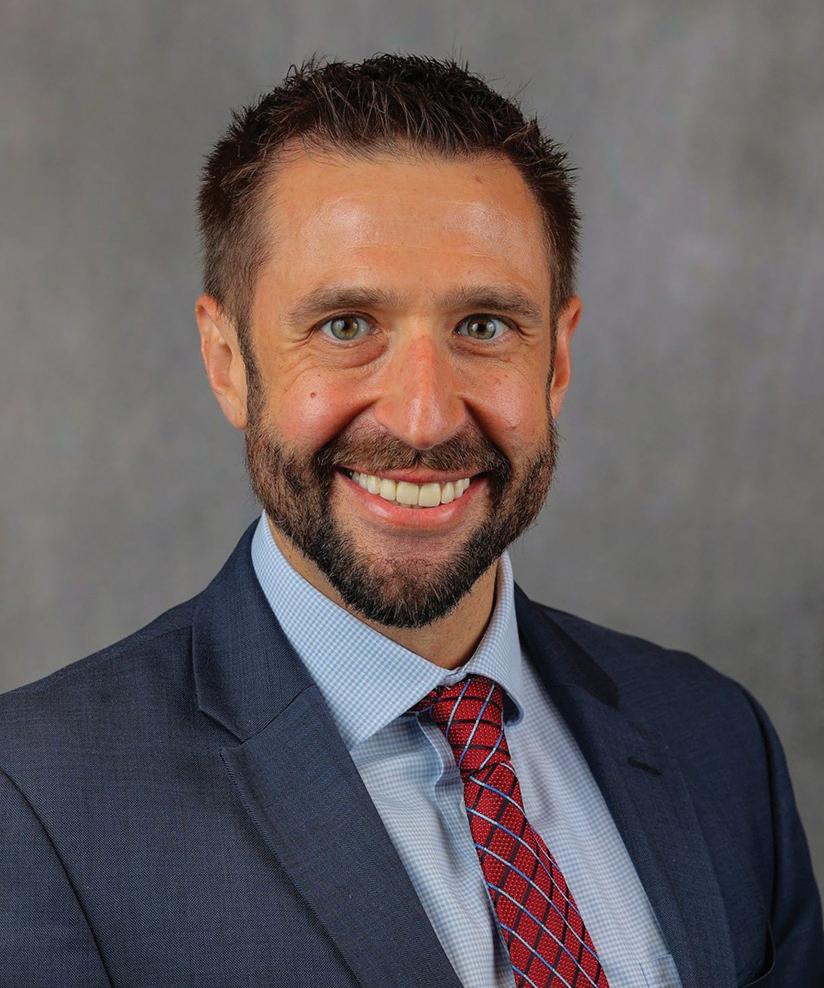
505-750-7150
ben@benshermanlaw.com
Ben Sherman is the founder of Ben Sherman Law LLC, located in Albuquerque. His practice is focused primarily on representing injured workers in workers’ compensation cases. Prior to opening his own law firm in 2012, he served as a prosecutor with the 2nd Judicial District Attorney’s Office and as an assistant city attorney with the City of Albuquerque’s litigation department. Ben is a proud 2008 graduate of the University of New Mexico School of Law and has been fortunate to practice law in New Mexico for the past fifteen years. A fluent Spanish-speaker, he enjoys representing people from all communities and appreciates New Mexico’s unique diversity and rich traditions. Ben is a past chair of the State Bar of New Mexico Young Lawyers Division and currently serves as president-elect of the Alumni Board of the University of New Mexico School of Law. He was also recently appointed to the New Mexico Board of Bar Examiners and proudly serves on the Access to Justice Fund Grant Committee of the State Bar of New Mexico. Ben represents the Second Judicial District, which includes Bernalillo County.
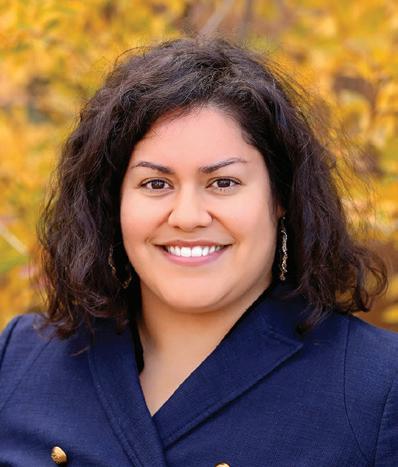


1st Judicial District (Los Alamos, Rio Arriba, and Santa Fe Counties)
Andréa Salazar
505-490-5542 • Andrea.Salazar@osa.nm.gov
Andréa Salazar is a native New Mexican raised in Santa Fe who attended undergraduate in Santa Cruz, CA. After working as a photographer for several years, she attended law school at UNM. She is a proud second generation UNM School of Law graduate. She is currently the Chief General Counsel for the New Mexico Office of the State Auditor. Over the past 12 ½ years she has practiced in a wide range of legal areas in both public and private practice from criminal law, local government and school law, land use, real estate, and redevelopment law. She loves hiking with her husband and dog, camping, photographing, and reading.
Olga Serafimova
505-954-3676 • omserafimova@hollandhart.com
Olga Serafimova is Of Counsel in the Santa Fe office of Holland & Hart, LLP, where she is a member of the Commercial Litigation and Appellate practice group. She previously served as the Senior Civil Counsel to Attorney General Hector Balderas, the General Counsel for the Department of Information Technology, and the Tobacco Bureau Chief at the Attorney General’s Office. Ms. Serafimova is a Board Member of the New Mexico Board of Bar Examiners, the State Bar liaison for the New Mexico Appellate Rules Committee, and the pro bono General Counsel of STEM Santa Fe, a non-profit organization providing free STEM programming to middle and high school aged children in Northern New Mexico. She is licensed to practice law in New Mexico, California, and Massachusetts.
Elizabeth J. Travis
505-231-7659 • EJTravislaw@gmail.com
Elizabeth J. Travis is a deputy general counsel with the New Mexico Department of Transportation, serving as counsel for the Department’s construction, operations and finance organizations, a practice which includes construction, environmental, procurement and contract law. Prior to working for the State, Travis served as an assistant county attorney for Santa Fe County. Travis also serves on the Supreme Court’s Disciplinary Committee and on the State Bar Ethics Advisory Committee. She is an active member of the ABA, participating in the public contract law section and the construction industry forum. Travis is licensed to practice in state and federal court in New Mexico and California.
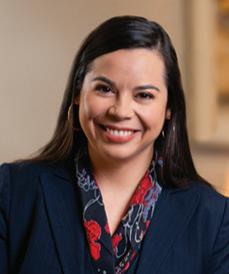


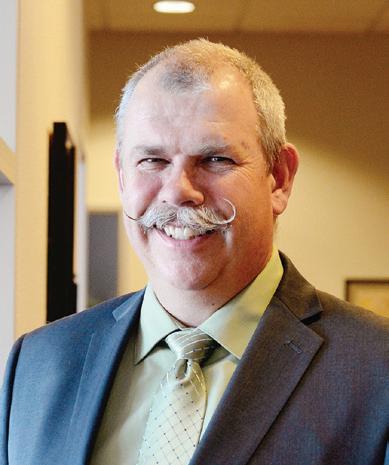

Allison H. Block-Chavez
Secretary-Treasurer
See page 2.
Aja N. Brooks President-Elect
See page 1.
Tomas J. Garcia
505-848-1800 • Tomas.garcia@modrall.com
Tomas J. Garcia is a shareholder at Modrall Sperling in Albuquerque, where he practices commercial, healthcare, torts/personal injury, and transportation litigation. Tomas is a past chair and board member of the State Bar of New Mexico Young Lawyers Division and he is an active leader with the American Bar Association, currently serving as the New Mexico Membership Chair. Tomas also serves on the board of the New Mexico Defense Lawyers Association. An Albuquerque native, Tomas received his law degree from Georgetown University Law Center.
Steven S. Scholl
505-244-3890 • sscholl@dsc-law.com
Steven Scholl is a founding member of Dixon Scholl [Bailey] Carrillo, P.A. He does civil trials, but occasionally helps-out behind the scenes with criminal trials. He is a past president of the UNMSOL Alumni Board and the Albuquerque Bar Association. Serving on the Board of Bar Commissioners is another and different way that Steve serves the members of the Bar. Since graduating from UNMSOL in 1989, he spent a lot of free time “paying it forward” by teaching trial practice, evidence and deposition skills classes and coaching mock trial teams. Steve and Chris raised their two kids here, and they are raising theirs here as well. In addition to doing law stuff, they restored and use two vintage ‘50s camp trailers, drive a 1929 Model A Roadster and boat-camp. Life is Good.
Benjamin I. Sherman
Immediate Past President
See page 2.

505-883-3070 • lhs@atkinsonkelsey.com
Lucy H. Sinkular is a shareholder at Atkinson & Kelsey, P.A., in Albuquerque, where she limits her practice to family law matters. Admitted in 1994, Lucy comes from a family of lawyers and loves the law. Lucy is passionate about New Mexicans’ access to justice and maintains an active pro bono case load in addition to her regular practice. Lucy’s immediate family includes her husband Scott who is a scientist at NNSA, their daughter who is finishing graduate studies and their son who is an auditor in Denver. Lucy is also “mom” to one very spoiled pandemic puppy, Labrador retriever and his older sister, the rescued greyhound/Lab mix. Lucy serves as the Senior Warden for her Episcopal Church in Albuquerque. When not practicing law or volunteering for the Bar, Lucy can frequently be found with her husband pursuing outdoor hobbies of camping, running, cycling and hiking.
3rd and 6th Judicial Districts (Dona Ana, Grant, Hidalgo, and Luna Counties)


Rosenda Chavez-Lara
575-635-9441 • chavez.r.law@gmail.com
Rosenda Chavez-Lara is a private attorney that has worked as a Guardian ad Litem, Youth Attorney, and Eligible Adult Attorney in Children’s Court in the Third Judicial District for over five (5) years. Mrs. Chavez-Lara has a law practice focused on representing children and their families in Abuse and Neglect cases and Domestic Relations matters. Before her practitioner work, she was a legal intern at the United States Department of Justice, U.S. Attorney’s Office for the Western District of Texas. Additionally, Ms. Chavez-Lara was a legal volunteer with the Personal Protection Office/End the Violent Encounters (EVE) Inc. in Lansing, Michigan. She managed the US-Mexico Foundation for Science (FUMEC), in Washington, D.C., before attending law school in 2011. Additionally, Mrs. Chavez-Lara is a licensed Elementary School Teacher in the state of Texas.
Connie J. Flores
575-303-9999 • cflores@floresmendez.com
Connie J. Flores is partner at Flores Mendez, P. C., specializing in cases involving personal injury to include on the semi-truck accidents, on the job injuries, premises liability, Dram Shop, nursing home and representing victims of sexual abuse in civil lawsuits. Her mission is to help injured people that have been treated unjustly by insurance companies. As a fluent Spanish speaker, Ms. Flores enjoys representing individuals who otherwise would not be able to effectively communicate their issue to an attorney. Ms. Flores attended the University of Denver and graduated in 2003. She attended UNMSOL graduating in 2008. She was admitted to practice law in New Mexico in September 2008, Texas in May 2009 and Arizona 2022. Ms. Flores, who became a teenage mother at the age of 15, has been asked on numerous occasions to be a keynote speaker at local area high schools addressing the issues surrounding teenage pregnancy, in an effort to encourage teenage parents to continue their education and attend college.

David P. Lutz
575-526-2449 • dplutz@qwestoffice.net
David P. Lutz is a Las Cruces attorney at Martin & Lutz, P.C. He practices law with his father and focuses primarily on civil and domestic relations matters. He has been with the firm since 2004. He was born in Las Cruces, New Mexico and graduated from Onate High School. He attended Claremont McKenna College (B.A. 1997) and Cornell Law School (J.D. 2000). He has appeared and practices regularly in the Third, Sixth, and Seventh Judicial Districts. He served on the Young Lawyers Division Board as a Regional Director from 2007 through 2011. When he is not working, he enjoys playing soccer and going with his family to cultural and/or sporting events at New Mexico State University.
(Guadalupe, Mora, San Miguel, Colfax, Taos, and Union Counties)

Brett Phelps
505-425-5129 • phelpslawoffice@gmail.com
Brett Phelps is a sole practitioner and owner of the Phelps Law Office in Las Vegas. He became a lawyer to help end the disastrous war on drugs, and today his practice focuses primarily on criminal defense and cannabis law. He serves on the State Bar Cannabis Law Section Board of Directors and as the Northeast Regional Director of the New Mexico Criminal Defense Lawyer’s Association. He also advocates for criminal law reform at the New Mexico State Legislature. He attended the University of New Mexico School of Law (J.D., 2017, magna cum laude), New Mexico Highlands University (M.A., English), and the University of Nevada, Reno (B.B.A.)
5th Judicial District (Chaves, Eddy, and Lea Counties)
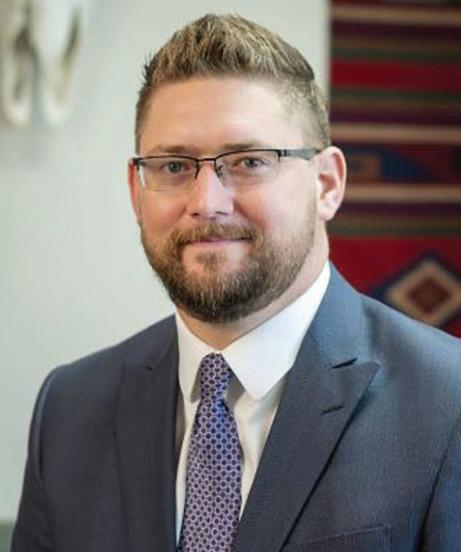
Parker B. Folse
575-622-6510 • pfolse@hinklelawfirm.com
Parker Folse is a partner in the Roswell office of Hinkle Shanor LLP. He is a graduate of University of Texas at Dallas, B.A. Political Science, and the University of Oklahoma School of Law, J.D. Parker primarily assists commercial clients in litigation matters in both State and Federal Courts at both the district and appellate levels. Parker was admitted to practice law in New Mexico in 2011 and is a member of the New Mexico State Bar Trial Practice Group, the Chaves County Bar Association, the New Mexico Defense Lawyer’s Association, and the Defense Research Institute. Parker enjoys exploring the outdoors by camping and hiking in New Mexico’s mountains with his wife, Robin, and daughter, Evelyn.
7th and 13th Judicial Districts (Catron, Cibola, Sandoval, Sierra, Socorro, Torrance, and Valencia Counties)

Jessica A. Perez
505-771-7400 • jperez2@da.state.nm.us
Jessica Perez is an Assistant District Attorney in the 13th Judicial District within Sandoval County. There, she works primarily as a senior felony trial attorney handling a variety of cases including juvenile delinquency, expungements, and extraditions. In addition to her work as a prosecutor, Jessica likes to be involved with the legal community through volunteer work. She currently serves on the Prosecutors Section and previously served on the Young Lawyer’s Division board. In 2019 she was awarded as Community Service Prosecutor of the Year by the New Mexico District Attorneys’ Association and by the Prosecutors Section in 2020 for prosecutorial excellence. On the rare occasion she is not working, Jessica enjoys reading, going on hikes with her dog, and she’s a big fan of sleeping.

Simone M. Seiler
505-865-2400 Ext. 2122 • berdsms@nmcourts.gov
Simone M. Seiler is staff attorney at the Thirteenth Judicial District Court. She is a 2006 graduate of the University of New Mexico School of Law. In 2007, she passed the patent bar and began representing clients before the United States Patent & Trademark Office. Simone spent the first half of her legal career working for a private civil and intellectual property law firm, and the second half working for the Human Services Department and the Thirteenth Judicial District Court. She is past chair of the State Bar of New Mexico Intellectual Property Section and served on the boards of the Animal Law Section and the New Mexico Women’s Bar Association.
9th and 10th Judicial Districts (Curry, Roosevelt, DeBaca, Harding, and Quay Counties)
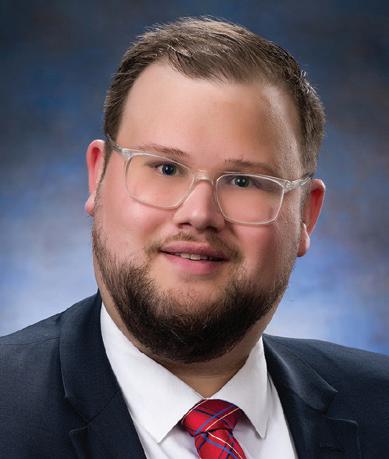
Mitchell L. Mender
575-265-5333 • Mitch@larsenandmender.com
Mitchell L. Mender is a founding partner of The Law Offices of Larsen and Mender P.C., located in Clovis, NM. His practice focuses primarily on criminal law, family law, and personal injury. Mitch is a graduate of Brigham Young University. He graduated from Vermont Law School in their accelerated Juris Doctorate program. He started his career as a prosecutor with the Ninth Judicial District Attorney’s Office, where he was awarded prosecutor of the year for the District in 2018 and 2019. Subsequently, he worked at the New Mexico Law Offices of the Public Defender where he represented indigent clients. Additionally, he sits on the Board of Directors for the Hartley House, the local domestic violence shelter. He and his wife, Robyn, enjoy traveling and spending time with their three children.
11th Judicial District (McKinley and San Juan Counties)

Joseph F. Sawyer
505-334-4297 • jsawyer@sjcounty.net
Joseph F. Sawyer serves as the County Attorney for San Juan County. A Farmington native, he attended the University of New Mexico (B.A., 1995) and Notre Dame Law School (J.D., 1999). Prior to working for San Juan County, Joe spent several years in private practice and worked for the 11th Judicial District Attorney’s Office in Farmington. He served as president of the San Juan County Bar Association in 2011 and was on the State Bar of New Mexico Young Lawyers Division Board of Directors from 2006 to 2007. Joe and his wife Ana enjoy backpacking, mountain biking, traveling and spending time with their two daughters.
12th Judicial District (Lincoln and Otero Counties)

Erinna M. “Erin” Atkins
President
See page 1.

Sean M. FitzPatrick
505-400-0420 • sfitzpatrick@fitzpatricklawllc.com
After working for a few years as a prosecutor litigating felony and misdemeanor cases, Sean FitzPatrick started his firm FitzPatrick Law, LLC in 2016. FitzPatrick’s current practice area is civil litigation focusing on insurance and injury law. FitzPatrick served on the Young Lawyers Division board for years as director and chair prior to his current term on the BBC. FitzPatrick is also the current Co-Chair of the New Mexico State Bar Well Being committee. He believes a healthy work life balance makes better lawyers and you can find FitzPatrick running, biking, or participating in other type 2 fun activities with his wife Eva and their son Liam when not practicing law.

Randy Taylor
505-768-7232 • rtaylor@rodey.com
Randy Taylor is a Director in the Albuquerque office of the Rodey Law Firm, practicing in a broad range of areas including medical, legal and other professional malpractice, insurance coverage and bad faith, commercial litigation, and real property disputes. Randy graduated cum laude from the UNM School of Law in 2016. While in law school, he served as the Managing Editor of the New Mexico Law Review and competed on the ABA National Appellate Advocacy Competition team, which achieved a regional Best Brief Award. Following law school, Randy returned to his hometown of Las Cruces to clerk for a United States Magistrate Judge. Back in Albuquerque, Randy enjoys trying new restaurants, breweries, and cafes, card and board games, and road tripping around New Mexico.
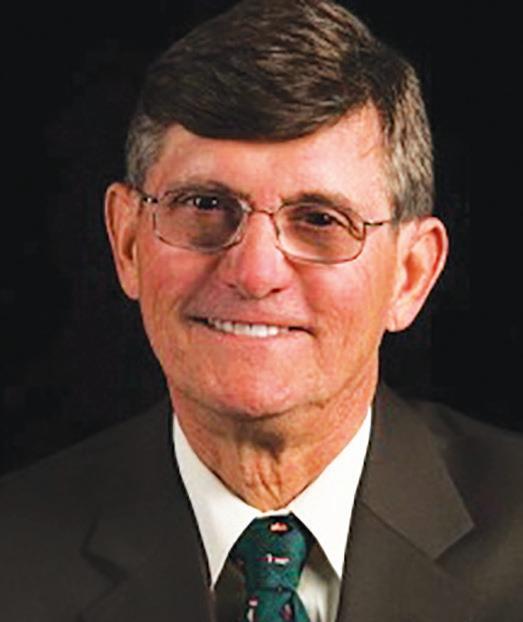
Daniel J. Behles
505-433-3097 • dbehles@askewlawfirm.com
Dan Behles is of Counsel to the Albuquerque bankruptcy firm of Askew Law Firm, LLC. He graduated from the University of Notre Dame, and received his J.D. degree from the University of New Mexico. He has practiced in New Mexico for over 50 years, concentrating in bankruptcy. He has represented debtors, creditors, trustees and committees, and has been a Chapter 7 and Chapter 11 Trustee. He is a member of the Subchapter V panel of trustees for small business reorganizations. He sits on the board of directors of the Senior Lawyers Division, and has been a Southwest Superlawyers for over 10 years.

Meryl Sutton
505-545-8554 •
meryls@nmlegalaid.org
Meryl Sutton is a New Mexico native and graduated from the Paralegal Studies Program in January 2019. Following graduation, she accepted an internship with New Mexico Legal Aid and then accepted the position of Interim Pro Bono Coordinator. In June of 2020, Meryl transitioned into the position of VAP Paralegal. Meryl’s work focuses on providing access to justice to low-income New Mexican’s by recruiting private attorneys to represent her clients pro bono in various capacities. Meryl joined the State Bar Paralegal Division in 2021 and was elected Chair Elect in November 2022. Meryl also Chairs the Divisions Pro Bono Committee as it ties in with her work. In her free time, Meryl enjoys spending time with friends and family, watching documentaries, cooking and going to the opera.
Get involved with the State Bar of New Mexico! Are you looking for a way to be more involved with the State Bar and gain leadership experience?
Consider applying for an appointment to serve on one of the many N.M. Supreme Court boards, committees and commissions to which the Board of Bar Commissioners makes appointments. Look for notices regarding vacancies in the Bar Bulletin and in ENews throughout the year. In the fall, look for information about the commissioner elections. For more information about the Board, contact your district bar commissioner or the State Bar.
bbc@sbnm.org • 505-797-6038
functions as a rejection of the maximum amount of coverage. Id. ¶¶ 14, 15.
{35} Finally, in Jordan, we “prescribe[d] workable requirements for a valid and meaningful rejection of UM/UIM coverage” to insurers, 2010-NMSC-051, ¶¶ 20-21, and stated,
If an insurer does not (1) offer the insured UM/UIM coverage equal to his or her liability limits, (2) inform the insured about premium costs corresponding to the available levels of coverage,
(3) obtain a written rejection of UM/UIM coverage equal to the liability limits, and (4) incorporate that rejection into the policy in a way that affords the insured a fair opportunity to reconsider the decision to reject, the policy will be reformed to provide UM/ UIM coverage equal to the liability limits.
Id. ¶ 22. Our intention in setting out these requirements and stating that failure to meet them would result in reformation of the contract was to provide a definitive guide to insurers as to what they must do to secure a legally binding rejection of coverage. Id. ¶ 25. Seeking to ensure that insureds could “make a realistically informed choice,” we articulated clear “requirements for a valid and meaningful rejection of UM/UIM coverage in amounts authorized by statute.” Id. ¶ 20.
{36} Plaintiffs challenge the rejections executed in these three cases on the grounds that Defendant-insurers failed to make meaningful offers of UM/UIM coverage, in violation of our UM/UIM jurisprudence.
They contend that an offer of UM/UIM insurance that does not include an explanation of stacking is not meaningful and that it discourages consumers from purchasing UM/UIM insurance, in contravention of the legislative purpose of Section 66-5-301.
They argue that, because Defendant-insurers stack coverages as a matter of course, if an insured pays multiple premiums for UM/UIM coverage on multiple vehicles, the actual maximum amount of coverage available is the amount of coverage that would result from stacking. See Weed Warrior , 2010-NMSC-050, ¶¶ 14-15 (holding that an offer of UM/UIM coverage must include the maximum amount of coverage statutorily available and that an insured’s election of a lower amount acts as a rejection of that maximum amount); Jordan , 2010-NMSC-051, ¶ 2 (holding that “insurers must provide the insured with the premium charges corresponding to each available option for UM/UIM
coverage so that the insured can make a knowing and intelligent decision to receive or reject the full amount of coverage to which the insured is statutorily entitled”). Accordingly, Plaintiffs argue that insurers’ failure to provide an explanation of stacking deprives insureds of information that is essential to a knowing and intelligent waiver of UM/UIM coverage.
{37} Defendant-insurers respond Plaintiffs have misread Weed Warrior and Jordan by ignoring language in both opinions that establishes that the maximum amount of coverage insurers are required to offer is that which is “statutorily available”⸺that is, an amount equal to the liability limits of the policy. They observe that there is a difference between maximum available coverage and the maximum benefits that an insured may obtain following a loss and argue that New Mexico’s rules governing valid offers and rejections apply only to the former. They note Jordan’s “‘workable requirements’” for a valid UM/UIM insurance offer and rejection do not mention stacking.
{38} Two of the three district courts agreed with the insurers and found that Jordan controls and does not require disclosure of stacked benefits on UM/ UIM offer or selection/rejection forms. In Jaramillo, the Tenth Circuit held similarly. 573 F. App’x at 749. In that case, the panel focused exclusively on the question of whether GEICO’s selection/rejection form (identical to those at issue in Lueras and Van Epps and materially very similar to Safeway’s form) was adequate under New Mexico law. Jaramillo, 573 F. App’x at 741. It concluded that Jordan’s requirements govern offers and waivers of UM/UIM coverage and that, while those requirements incorporated Montano’s instruction that premiums be disclosed, they did not “expressly require that the Option Form provide the premium costs corresponding to the available levels of stacked coverage.”
Id. at 748. The Jaramillo Court “decline[d] to graft the crucial word ‘stacked’ onto [Jordan’s] holding.” Id. at 744 n.9.
{39} The clearest articulation of a contrary analysis comes from the special concurrence in Lueras, which viewed the Jaramillo Court’s analysis as overly mechanical. 2018-NMCA-051, ¶ 31 (Attrep, J., specially concurring). The special concurrence stated that because GEICO stacks coverage, its failure to disclose the stacked coverages available to insureds “runs afoul of the guiding principle behind Jordan that ‘in order for the offer and rejection requirements of [the UM/UIM statute] to effectuate the policy of expanding UM/
UIM coverage, the insurer is required to meaningfully offer such coverage and the insured must knowingly and intelligently act to reject it before it can be excluded from the policy.’” Id. ¶ 35 (Attrep, J., specially concurring) (alteration in original) (quoting Marckstadt, 2010-NMSC-001, ¶ 16). Accordingly, the failure to include a disclosure of stacking in the selection/ rejection form means insureds are inadequately informed about what they are giving up when they reject coverage because they are not given information about what the insurer is “actually offering.” Id.
{40} We find authority in our UM/UIM jurisprudence in support of either approach. For example, in describing our “workable requirements” as prescriptive, we clearly communicated our intention that they be strictly adhered to by insurers to settle the question as to what was required to secure effective rejections of UM/ UIM coverage. Jordan, 2010-NMSC-051, ¶ 20 (“Accordingly, we find it necessary to prescribe workable requirements for a valid and meaningful rejection of UM/ UIM coverage in amounts authorized by statute.”); id. ¶ 25 (“In these cases we detail for the first time the technical requirements for a valid rejection of UM/UIM coverage in an amount equal to liability limits.”).
{41} On the other hand, “in order for the offer and rejection requirements of [the UM/UIM statute] to effectuate the policy of expanding UM/UIM coverage, the insurer [must] meaningfully offer such coverage and the insured must knowingly and intelligently act to reject it before it can be excluded from the policy.” Marckstadt, 2010-NMSC-001, ¶ 16. “The courts of New Mexico assume the average purchaser of automobile insurance ‘will have limited knowledge of insurance law,’ and we will not impose on the consumer an expectation [of] an informed decision as to the amount of UM/UIM coverage desired or required without first receiving information from the insurance company.” Weed Warrior, 2010-NMSC-050, ¶ 13. While Section 66-5-301’s requirement that every insurance policy issued in New Mexico must offer UM/UIM coverage in minimum and maximum amounts speaks of single limits of liability (per person or per occurrence), the purchase of coverage on multiple vehicles through payment of multiple premiums will enhance the value of an insured’s premiums if stacking is permitted under the policy. We therefore agree with Plaintiffs that, because insurers stack benefits in most cases where multiple vehicles are insured,⁸ insurers should
⁸ See Lopez, 1982-NMSC-034, ¶ 21 (“Whether stacking is to be permitted depends on the evidence presented in each case.”); Montano, 2004-NMSC-020, ¶ 15 (recognizing that insurers may decline to stack benefits “when the policy clearly only charges a single premium and unambiguously precludes stacking”).
Continued from page 24.
provide information about stacking to consumers to ensure that they understand what they may be waiving in rejecting UM/UIM coverage. By providing material information about the benefits an insured may actually receive when purchasing UM/UIM coverage on multiple vehicles, an explanation of stacking may encourage some consumers to purchase UM/UIM insurance where they might otherwise demur, advancing the legislative purpose of Section 66-5-301. See Padilla v. Dairyland Ins. Co., 1990-NMSC-025, ¶ 4, 109 N.M. 555, 787 P.2d 835 (“‘The purpose of the Mandatory Financial Responsibility Act . . . is to require and encourage residents of the state of New Mexico . . . to have the ability to respond in damages to [motor vehicle] accidents.’” (quoting NMSA 1978, § 66-5-201.1 (1983, amended 1998) of the Mandatory Financial Responsibility Act)). The purpose of the UM/UIM statute is best advanced when insureds are provided clear, comprehensible information about the costs and benefits of offered coverages; under this approach, “‘those who want stacked coverage pay for it, and those who don’t want it don’t pay for it.’” Montano, 2004-NMSC-020, ¶ 18 (quoting U.S. Fid. & Guar. Co. v. Ferguson, 698 So. 2d 77, 84 (Miss. 1997) (Lee, C.J., specially concurring)).
{42} Our interpretation of Section 665-301 in Jordan and Weed Warrior was grounded firmly in the imperative to construe the statute “liberally” to achieve its “remedial purpose[].” Jordan, 2010NMSC-051, ¶ 15; see Weed Warrior , 2010-NMSC-050, ¶ 14. Indeed, because the text of Section 66-5-301 has often provided insufficient guidance in answering the questions that come before us, the imperative to further the statute’s legislative purpose has directed our UM/ UIM decisions. For example, we have held that the legislative purpose of expanding UM/UIM coverage demands that, where a rejection of UM/UIM coverage fails to adhere to regulatory requirements, such coverage must be read into the policy when the insured files a claim for the benefits. Romero v. Dairyland Ins. Co., 1990-NMSC-111, ¶¶ 6-9, 111 N.M. 154, 803 P.2d 243. Similarly, in Weed Warrior, we “[r]ecall[ed] that Section 66-5-301 is a remedial statute that must be construed liberally” in holding that the choice by an insured to purchase UM/UIM insurance in an amount lower than the policy limits “functions as a rejection of th[e] maximum amount of coverage statutorily possible.” 2010-NMSC-050, ¶¶ 14-15.
{43} We therefore conclude that our resolution of this issue requires us to balance a recognition of the formal requirements we set forth in Jordan with the practical reality that the routine stacking of benefits
in New Mexico may increase the value of an insured’s premium payment. We hold that, in recognition of the practical reality that insurers now permit stacking as a matter of course in New Mexico, offers of UM/UIM insurance going forward must include a brief discussion of stacking. However, insurers need not set out a matrix of all stacking possibilities in their offers of UM/UIM coverage to adequately inform insureds of the potential effects of stacking. A declaration that clarifies that an insured who purchases insurance on multiple vehicles and pays multiple premiums would be entitled to stack benefits in the event of a covered loss and affords the insured an opportunity to obtain additional information about stacking will satisfy this requirement. We impose this requirement to ensure that coverages meet the consumers’ reasonable expectations. See Jimenez, 1988-NMSC-052, ¶ 10.
C. Our Application of This Holding Is Selectively Prospective {44} We next consider whether to apply this holding retroactively or prospectively. “It is within the inherent power of a state’s highest court to give a decision prospective or retrospective application without offending constitutional principles.” Lopez v. Maez, 1982-NMSC-103, ¶ 17, 98 N.M. 625, 651 P.2d 1269. While we observe “a presumption of retroactivity for a new rule [adopted] in a civil case,” this presumption “may be overcome by a sufficiently weighty combination” of several factors:
(1) whether the decision to be applied prospectively establishes a new principle of law, (2) whether retroactive operation will advance or inhibit the operation of the new rule, and (3) whether retroactive application may “produce substantial inequitable results.” Beavers v. Johnson Controls World Servs., Inc., 1994-NMSC-094, ¶¶ 22-23, 118 N.M. 391, 881 P.2d 1376 (internal quotation marks and citation omitted).
{45} With respect to the first factor, Plaintiffs contend the requirement that insurers include an explanation of stacking on an offer of UM/UIM coverage does not constitute a new rule. They argue that our discussion of a hypothetical offer in Montano established that all offers of UM/ UIM insurance for multiple vehicles must disclose each of the stacked liability limits available for purchase and their associated premiums. They point to a hypothetical offer we described in Montano, which stated: As an illustration of our holding, in a multiple-vehicle policy insuring three cars, the insurer shall declare the premium charge for each of the three UM coverages and allow the insured to reject, in writing, all or some of the offered coverages. Thus, hypothetically, in the case of a $25,000 policy, if
the premium for one UM coverage is $65, two coverages is an additional $60, and three coverages $57 more, the insured who paid all three (for a total premium of $182) would be covered up to $75,000 in UM bodily injury coverage. However, the insured may reject, in writing, the third available coverage and pay $125 for $50,000 of UM coverage; or the insured may reject, in writing, the second and third coverages and pay $65 for $25,000 of UM coverage; or the insured may reject all three UM coverages.
2004-NMSC-020, ¶ 20. Plaintiffs contend the phrase “the insurer shall declare the premium charge for each of the three UM coverages,” id. (emphasis added), along with the description of stacked coverages, established a rule requiring disclosure of stacking in all UM/UIM offers.
{46} We disagree. In Montano, we addressed whether an insurer could enforce a limitation-of-stacking clause that would have permitted the insured to stack coverages from only two of the four vehicles he had insured. Montano, 2004-NMSC-020, ¶¶ 3-7. We did not consider the question whether the insurer’s offer of UM/ UIM insurance was valid under New Mexico law, and “cases are not authority for propositions not considered.” Fernandez v. Farmers Ins. Co. of Ariz., 1993-NMSC-035, ¶ 15, 115 N.M. 622, 857 P.2d 22 (internal quotation marks and citation omitted). Plaintiffs also ignore the language in Montano preceding the hypothetical, clarifying its inclusion “[a]s an illustration of our holding,” 2004-NMSC-020, ¶ 20, which is that “an insurance company should obtain written rejections of stacking in order to limit its liability based on an anti-stacking provision.” Id. ¶ 19.
{47} Defendant-insurers were not unreasonable in relying on our prior decisions in determining that a disclosure of the effects of stacking was not required in offers of UM/UIM coverage. See Beavers , 1994NMSC-094, ¶ 27 (“The extent to which the parties in a lawsuit, or others, may have relied on the state of the law before a law-changing decision has been issued can hardly be overemphasized.”). Having considered this first factor on presumption of retroactivity, we therefore conclude that the requirement to disclose information about stacking in offers of UM/UIM insurance favors prospective application as it is “a new, and not easily foreshadowed aspect to our jurisprudence.” Montano, 2004-NMSC-020, ¶ 22.
{48} Addressing the second factor, the purpose of the stacking disclosure rule we announce in this opinion is to provide potential insureds with the information they
need to make an intelligent and informed decision whether to purchase or reject UM/UIM coverage. See Marckstadt, 2010NMSC-001, ¶ 16. Retroactive application of the stacking disclosure rule would not advance this purpose for those insureds who would be receiving this information in light of a loss already suffered. See generally Beavers, 1994-NMSC-094, ¶¶ 34-35 (stating that the deterrence purpose would not be advanced by retroactive application of prima facie tort rule because it could not deter conduct that had already occurred). On the other hand, retroactive application of the rule would serve a compensatory purpose, id. , and accordingly “provide meaningful enforcement of the requirements of Section 66-5-301 . . . ensuring that every insured has been afforded his or her statutory right to either obtain UM/UIM insurance coverage equal to the liability limits of the policy or to make a knowing and intelligent rejection of part or all of that coverage.” Jordan, 2010-NMSC-051, ¶ 28. Considering these purposes together, we conclude that the second factor weighs neutrally. Beavers, 1994-NMSC-094, ¶ 35. {49} Third, we consider whether it would be inequitable to apply the stacking disclosure rule retroactively to Defendantinsurers. Id. ¶ 23. “The greater the extent a potential defendant can be said to have relied on the law as it stood at the time he or she acted, the more inequitable it would be to apply the new rule retroactively.” Id. ¶ 38. As we have stated, we do not consider it unreasonable for Defendant-insurers to have relied on language in our earlier decisions to conclude that their offers need not include stacking disclosures. Additionally, our statement in Jordan that we were “prescrib[ing]” the requirements “for a valid and meaningful rejection of UM/ UIM coverage in amounts authorized by statute” may have suggested to insurers that the enumerated requirements ⸺ which did not mention stacking⸺were conclusive. Jordan, 2010-NMSC-051, ¶ 20. Although Defendant-insurers may be in a better position than insureds to bear the costs associated with enforcement of the new requirement, we cannot say that this is an instance in which insurers failed to ensure their compliance with existing law, thereby mitigating any inequity. See id. ¶ 29 (“[W]e deem it more equitable to let the financial detriments be borne by insurers, who were in a better position to ensure meaningful compliance with the law, than to let the burdens fall on nonexpert insureds, who are the Legislature’s intended beneficiaries.”). Moreover, “[t] he reliance interest to be protected by a holding of nonretroactivity is strongest in commercial settings, in which rules of contract and property law may underlie the negotiations between or among parties
to a transaction.” Beavers, 1994-NMSC094, ¶ 28. Accordingly, we again conclude in favor of prospective application of the rule: it would be inequitable to apply the stacking disclosure requirement to Defendant-insurers “before [they have] had an opportunity to [ensure compliance].” Montano, 2004-NMSC-020, ¶ 22.
{50} On balance, we conclude that the stacking disclosure rule we announce in this opinion should be applied prospectively. However, we have recognized that pure prospectivity⸺where a new rule of law is applied only to conduct arising after the issuance of our mandate⸺ is rarely appropriate. See Beavers, 1994-NMSC-094, ¶ 18 n.7. Instead, “[w]e have repeatedly held that certain decisions would be given ‘selective’ or ‘modified’ prospective effect,” applying to the litigants in the case giving rise to the new rule and “thereafter only to parties whose conduct occurs after the announcement.” Id. ¶ 18 & n.7. Because this case has “afforded us the opportunity to change an outmoded and unjust rule of law,” we conclude that our decision should apply with selective prospectivity. See Lopez, 1982-NMSC-103, ¶ 18.
{51} Accordingly, we reverse the Court of Appeals’ determinations in Ullman and Lueras that Defendant-insurers’ failure to include an explanation of stacking in their offers of UM/UIM coverage did not render Plaintiffs’ rejections invalid in those cases.
Ullman, 2017-NMCA-071, ¶¶ 42-44, 59; Lueras, 2018-NMCA-051, ¶¶ 10-11.
to an Existing Policy
{52} The Luerases contend that GEICO did not secure an effective rejection of UM/UIM coverage from them because GEICO failed to obtain a new rejection of coverage after the Luerases added a vehicle to their existing policy. According to the Luerases, when a new vehicle is added to a policy “there is necessarily a change in the levels of UM/UIM coverage available to the insured, and a change in the corresponding costs associated with each level of coverage” and there can be no rejection unless information about coverages and costs is provided to the insured. Thus, the Luerases ask us to revisit Vigil, which held that an insurer need not obtain a new rejection of UM/UIM coverage when insureds add an additional vehicle to their existing policy. 1997-NMCA-124, ¶ 16. They argue that the rule announced in Vigil is inconsistent with our later holdings in Montano and Jordan in which we “made clear, years after the Court of Appeals decision in Vigil, that there can be no valid UM/UIM [rejection] where an insured is not provided information regarding all levels of UM/UIM coverages available and the costs for the
same.” Alternatively, the Luerases contend that the blank selection/rejection form sent to insureds seeking to add a vehicle is ambiguous because it states, “If a box is not checked, I understand that UM/UIM Bodily Injury Coverage will be issued with limits equal to the Bodily Injury Liability Limits of my policy and my UM Property Damage Coverage will be issued with limits of $10,000 each accident.”
{53} GEICO responds that Plaintiffs’ argument ignores Section 66-5-301(C), which provides that “unless the named insured requests such coverage in writing, such coverage need not be provided in or supplemental to a renewal policy where the named insured has rejected the coverage in connection with a policy previously issued to him by the same insurer.” GEICO further notes that the basis of the Vigil decision was the Court of Appeals’ determination that the addition of a vehicle to an existing policy did not trigger the creation of a new contract but “merely amounted to a continuation of the original policy.” Vigil, 1997-NMCA-124, ¶ 16.
{54} We agree with GEICO. Nothing in our decisions in Montano or Jordan concerns the continuation, renewal, or modification of an existing automotive insurance policy. As we have explained, Montano does not set forth rules for obtaining rejections of UM/UIM coverage but, instead, establishes requirements for insurers seeking to limit their liability through antistacking provisions. Montano, 2004-NMSC-020, ¶ 17. In Montano, “we conclude[d] that the protracted litigation over the validity of anti-stacking clauses in this State demands our continued efforts to clarify when and under what circumstances those provisions might be enforced.” Id. Our decision in that case therefore provides no authority for Plaintiffs’ contention that a change in premiums or coverages requires a new rejection of UM/UIM coverage.
{55} Further, while Jordan does address the requirements for securing an insured’s “knowing and intelligent decision to receive or reject the full amount of coverage to which the insured is statutorily entitled,” 2010-NMSC-051, ¶ 2, the Jordan Court did not consider the question of what constitutes a new policy versus a “renewal” for purposes of applying Section 66-5-301(C). Id. ¶¶ 16-22. Moreover, nothing in Jordan calls into question the central observation of Vigil that “the policy trails the insured regardless of what vehicle is to be covered by the policy.” Vigil , 1997-NMCA-124, ¶ 15.
{56} We conclude that the addition of a fourth vehicle to the Luerases’ policy did not trigger the creation of a new contract obliging GEICO to comply with the Jordan requirements but instead only required it
to comply with the requirements of Section 66-5-301(C). See Vigil, 1997-NMCA-124, ¶¶ 14-16. Additionally, because the initial UM/UIM selection/rejection form completed by the Luerases (indicating their rejection of UM/UIM coverage) clearly stated that the insured’s election “shall apply to all vehicles currently on the policy and to all vehicles added to the policy ” (emphasis added), the blank selection/ rejection form GEICO sent to the Luerases when they sought to add an additional vehicle to their policy merely afforded them the opportunity to make a different election and created no ambiguity warranting construal of the contract against GEICO.⁹
See Vigil, 1997-NMCA-124, ¶¶ 11, 18-19 (explaining that “the validity of the initial rejection of UM coverage” was not affected by the plaintiffs’ selections, since they were not “changing limits or adding coverages”);
cf. Lopez, 1982-NMSC-034, ¶¶ 5-6 (holding that where the contract contained no mention of effect of payment of multiple premiums on multiple vehicles, it was ambiguous and warranted construal of its terms against the insurer).
{57} We therefore hold that the addition of a new vehicle to the Luerases’ policy did not trigger a new policy warranting compliance with Jordan’s requirements for rejection of UM/UIM coverage.
E. Plaintiffs’ Remaining Claims Are Remanded to the District Courts for Additional Development
{58} Plaintiffs’ final three claims concern whether Defendant-insurers’ “Limits of Liability” clauses misled insureds, whether GEICO’s form letter instructing the Van Eppses to return a selection/rejection form to ensure processing of their application was either misleading or otherwise in violation of law, and whether Defendantinsurers must offer UM/UIM coverage on a per-vehicle basis. Because we conclude that each issue requires further factual and/ or legal development below, we reverse the Court of Appeals’ resolution of these issues and remand them to the respective district courts. We address each briefly in turn.
1. Whether Defendant-Insurers’ “Limits of Liability” Clauses Mislead Insureds to Believe That Stacking Is Unavailable
{59} Both Safeway and GEICO include “Limits of Liability” clauses in their UM/ UIM policy documents. Safeway’s clause appears in its policy booklet under the subheading “Limits and Conditions of Payment Amounts Payable for Liability
Losses” and states:
Liability limits apply as stated in the Declarations. The insuring of more than one person or vehicle under this policy does not increase our liability limits.
GEICO’s clause appears in its policy booklet under the heading “Limits of Liability” and states:
When coverage is afforded to two or more autos, the limits of liability shall apply separately to each auto as stated in the declarations but shall not exceed the highest limit of liability applicable to one auto.
{60} Plaintiffs argue that these are antistacking provisions and that their inclusion in insurers’ policy booklets (1) precludes a knowing and intelligent rejection of UM/ UIM coverage under Jordan by affirmatively misrepresenting to insureds that coverages may never be stacked, (2) violates public policy by limiting the insured to the benefit of a single liability limit while charging the insured multiple premiums, and/or (3) creates an ambiguity in the contract because it states that insureds may not stack coverages even as “New Mexico law demands that all UM/UIM coverages be aggregated and applied to cover an insured’s damages absent a valid [rejection] of stacked UM/UIM coverage.”
{61} Safeway responds that “policy language forbidding or limiting stacking” is not prohibited in New Mexico, and that Montano reiterated that such provisions do not violate public policy unless they are ambiguous or unless multiple premiums are charged for one coverage limit. Safeway and GEICO both suggest that Plaintiffs’ claims concerning the limitation of liability clauses are inapt because the question of stacking only arises after a covered loss where the remedy is at issue. They contend that, because these cases concern insurer denials of coverage as opposed to insurer denials of stacking (that is, an attempt to enforce an antistacking provision), the clauses at issue are irrelevant.
{62} We decline to reach these arguments because none of the district courts whose decisions Plaintiffs appealed to the Court of Appeals directly considered, much less ruled on, whether the clauses at issue in fact amount to antistacking provisions
We note that neither limitation of liability provision at issue here expressly refers to stacking, unlike Montano, 2004-NMSC020, ¶ 4 (quoting from the relevant “Limits of Liability” provision stating in part that “we will stack or aggregate up to two, but
no more than two, Uninsured Motorist Insurance for Bodily Injury coverages under this policy” (internal quotation marks omitted)). However, Defendant-insurers have yet to be called on to explain precisely what the contested provisions do mean.
{63} The only district court to address the issue found that the question whether GEICO’s purported assertion that “stacking of UM/UIM is never available” is misleading to insureds would only arise “if the insured purchases UM/UIM coverage or if a rejection of UM/UIM coverage is invalid.”10 We conclude that this amounts to putting the cart, the purchase or rejection, before the horse. The determination of whether specific contractual language violates New Mexico’s public policy on stacking depends on the policy language at issue considered in light of the policy as a whole.
See Montano, 2004-NMSC-020, ¶¶ 11-13 (reviewing prior decisions determining whether antistacking provisions violated public policy by examining the language of the provisions and determining whether multiple premiums were charged for coverage). Similarly, whether the challenged clauses are so misleading as to defeat an insured’s knowing and intelligent rejection of UM/UIM coverage, Marckstadt, 2010NMSC-001, ¶ 16, or create ambiguities in the contract, Fickbohm v. St. Paul Ins. Co., 2003-NMCA-040, ¶ 10, 133 N.M. 414, 63 P.3d 517, depends on whether they in fact purport to limit stacking. Because these determinations depend on facts not yet developed in the present proceedings, they are more properly committed to the district court. “As an appellate court, we will not originally determine the questions of fact.” Guidry v. Petty Concrete Co., 1967NMSC-048, ¶ 13, 77 N.M. 531, 424 P.2d 806. On remand, the respective district courts should first ascertain the meaning of GEICO’s or Safeway’s limits of liability provisions and then determine whether, in light of the documents constituting Defendant-insurers’ offers of UM/UIM coverage, the contested language created ambiguities in the offer, violated the public policy of New Mexico, or so misled insureds as to defeat a knowing and intelligent waiver of coverage.
2. Whether GEICO’s Form Letter to Wendy Van Epps Was Misleading or Otherwise Improperly
Discouraged the Van Eppses from Purchasing UM/UIM Coverage
{64} The fourth claim on appeal is limited to the case involving the Van Eppses. Van Epps argues that the form letter GEICO
9 This language was consistent with language appearing on the Declarations page stating that the insured could contact the insurer “at any time to request a change to the coverage limits provided by this policy.”
10 The Court of Appeals, without explanation, “reject[ed the Ullman Plaintiff’s] contentions as a basis on which to reform Safeway’s documents,” Ullman, 2017-NMCA-071, ¶ 47, and declined to address the effect of the GEICO clause in Lueras, 2018-NMCA-051, ¶¶ 10-11.
sent to Wendy Van Epps after she initially selected UM/UIM coverage through an online application system amounted to a “bait and switch.” The letter stated:
In order to complete the processing of your new policy, a signed option form is needed. The option form is enclosed in your new customer package and is located after your ID cards, but before your insurance contract. Please complete, sign and return all of the pages of the option form. The form may be returned via fax . . . .
It is important that we receive this form back in order to continue your policy at the current premium, so please don’t delay. If you do not complete this form, we are required to make adjustments to your coverage, which will result in an increase in your premium.
Van Epps contends that the letter was misleading and confusing because it failed to explain what “adjustments” GEICO would make to the Van Eppses’ policy if they failed to complete the form or how their coverage or premiums might change, thereby discouraging the Van Eppses from purchasing UM/UIM coverage at all.
{65} GEICO responds that, because Wendy Van Epps initially selected UM/ UIM coverage in an amount below her policy liability limits, she had effectively rejected the maximum amount of UM/ UIM coverage. But because a rejection of coverage must be in writing, “by law, GEICO was required to obtain her rejection in writing” or read in coverage at the policy’s liability limits. GEICO explains that the form letter “always gets sent as a matter of course whenever an applicant selects UM/UIM coverage in an amount that is less than his liability limits” and defends the letter on the grounds that, had GEICO failed to secure the Van Eppses’ rejection in writing, their policy would have been revised in accordance with law to include UM/UIM coverage up to the liability limits of their policy, and they would have been charged the higher premium.
{66} The Court of Appeals agreed with GEICO. Lueras , 2018-NMCA-051, ¶¶ 23-26. It determined that GEICO was required to send the letter because otherwise the insured’s initial selection would have amounted to a legally deficient rejection of the offer of UM/UIM coverage. Id. ¶ 24. It
disagreed with the Van Eppses’ contention that the form and letter were ambiguous and that GEICO “discouraged” the purchase of UM/UIM coverage. Id. ¶ 26. {67} We agree with the Court of Appeals that GEICO was legally required to send the selection/rejection form to Wendy Van Epps to effectuate her initial selection of UM/UIM coverage. See id. ¶ 24. Selection of an amount of coverage lower than the maximum available amounts to a rejection of that coverage and must be made in writing. Weed Warrior, 2010-NMSC-050, ¶¶ 14-15; Marckstadt, 2010-NMSC-001, ¶ 20. {68} However, we do not agree with the Court of Appeals’ conclusion that the letter created no ambiguity in the offer as a matter of law. See Lueras, 2018-NMCA-051, ¶ 26. Van Epps appears not to have argued (and the Court of Appeals did not address) whether, in the specific circumstances at issue here, GEICO’s documentation may have run afoul of Jordan’s requirement that GEICO provide sufficient information about premiums and coverages to “meaningfully enable consumers to make a knowing and intelligent purchase or rejection of UM/UIM coverage.” 2010-NMSC051, ¶ 24. The parties did not fully litigate this issue before the district court, nor did that court make a specific determination as to whether GEICO’s letter created an ambiguity in the offer sufficient to call into question the validity of the rejection. Indeed, the hearing on GEICO’s motion for summary judgment evinces significant confusion among the parties and the court about when GEICO’s letter was sent, why it was sent, and what the effect would have been had the Van Eppses not returned it.
{69} We therefore reverse the Court of Appeals’ rejection of Van Epps’s claim concerning the form letter sent to the Van Eppses and remand to the district court for its consideration of this issue.
3. Whether Insurers Must Offer UM/ UIM Coverage on a Per-Vehicle Basis
{70} The Lueras Plaintiffs argued before the district courts that GEICO’s selection/ rejection form, which requires an insured to select or reject UM/UIM coverage on all insured vehicles or none of them, violates New Mexico law.11 The Luerases contended that our decision in “Montano held that an insurer must offer UM/UIM coverage on each vehicle, must declare a premium charge for each coverage, and must permit the insured to reject some or
all of the offered coverages on a per-vehicle basis.” They argued that GEICO’s failure to offer per-vehicle UM/UIM coverage violated this prescription and “the public policy of New Mexico . . . to expand UM[/ UIM] coverage.”
{71} Van Epps argued that GEICO’s failure to explain to Wendy Van Epps that “she was entitled to select UM/UIM coverage in different amounts on each vehicle and was entitled to this UM/UIM coverage regardless of what vehicle her family was in when involved in an accident with the UM motorist” meant that her waiver of coverage “was not an informed or intelligent decision.” He argued that, had Wendy Van Epps known of these aspects of coverage, she would not have rejected coverage on all four of her vehicles, referring to an affidavit submitted by Wendy Van Epps in support. In his argument on the motion before the district court, Van Epps also cited Montano in support of his contention that per-vehicle coverage options are required in New Mexico.
{72} The district court in the Lueras matter rejected this claim. It determined that the Luerases’ argument “conflate[d] Jordan’s explanation of the statutory requirements for obtaining a valid rejection of UM/UIM coverage with the judiciallycreated remedy of stacking [addressed in Montano].” The court stated that “[a] lthough stacking and the availability of UM/UIM coverage both may affect the amount of benefits available under a policy, they are separate inquiries.” The court did not address the Luerases’ contention that New Mexico’s public policy requires a per-vehicle UM/UIM coverage option.
{73} The district court in the Van Epps matter did not specifically address the claim that New Mexico law requires a pervehicle UM/UIM coverage option.
{74} On appeal to the Court of Appeals, both Van Epps and the Luerases argued that our decision in Montano established a requirement that insurers offer UM/UIM coverage on a per-vehicle basis and that GEICO’s form violates the dictates of that decision and contravenes the legislative purpose of the UM/UIM statute. Notably, the Lueras and Van Epps Plaintiffs relied on Montano for their public policy arguments.
{75} The Court of Appeals, reviewing this claim de novo, determined that the Lueras and Van Epps Plaintiffs had “misinterpreted Montano ,” concluding
11 Safeway’s form does provide per-vehicle UM/UIM coverage options. Ullman’s version of this question is “[w]hether an insurer can obtain a valid rejection of UM/UIM coverage on a multi-vehicle policy where it affirmatively misrepresents to an insured that rejection of UM/UIM coverage on one vehicle will eliminate all UM/UIM coverage on a policy regardless of UM/UIM selections on other insured vehicles.” However, Ullman’s brief in chief fails to explain how Safeway’s form achieves this misrepresentation, nor does it cite any authority in support of Ullman’s argument. We therefore decline to address it. See Headley v. Morgan Mgmt. Corp., 2005-NMCA-045, ¶ 15, 137 N.M. 339, 110 P.3d 1076 (stating that a reviewing court “will not review unclear arguments, or guess at what [a party’s] arguments might be”).
that “Montano did not consider whether automobile insurers should be required to offer policyholders UM/UIM coverage on a per-vehicle basis, much less impose such a requirement.” Lueras, 2018-NMCA-051, ¶¶ 9, 13, 18. Other than the hypothetical example of UM/UIM coverage described in Montano, the Lueras Plaintiffs had cited no authority for the claim that GEICO was required to offer per-vehicle coverage, and the Court determined that “nothing in the UM/UIM statute . . . provides [for such a requirement],” Lueras, 2018-NMCA-051, ¶¶ 16-18.
{76} Before this Court, the Luerases and Van Epps reprise their argument that our decision in Montano established the requirement that insurers offer UM/UIM coverage on a per-vehicle basis. We agree with the Court of Appeals’ conclusion that Montano established no such requirement. Lueras, 2018-NMCA-051, ¶ 18. As we have said, Montano addressed the requirements an insurer must meet should it seek to preclude the stacking of coverages in a multivehicle policy for which the insured pays multiple premiums. 2004-NMSC-020, ¶ 1.
{77} However, our conclusion that Montano does not impose such a requirement does not end the inquiry as to whether New Mexico law, interpreted in light of the Legislature’s clear purpose of encouraging the purchase of UM/UIM insurance, supports the imposition of a requirement that insurers offer per-vehicle UM/UIM coverage. Plaintiffs have thus far only faintly developed an argument in support of such a requirement, suggesting that it might enhance freedom of contract and encourage some consumers to purchase UM/UIM insurance who would otherwise elect to reject coverage. It is the role of appellate courts to “review the case litigated below, not the case that is fleshed out for the first time on appeal.” Spectron Dev. Lab. v. Am. Hollow Boring Co., 1997-NMCA-025, ¶ 32, 123 N.M. 170, 936 P.2d 852 (internal quotation marks and citation omitted). We “will not rule on an inadequately-briefed issue where doing so would require this Court ‘to develop the arguments itself, effectively performing the parties’ work for them.’” State v. Flores, 2015-NMCA-002, ¶ 17, 340 P.3d 622 (quoting Elane Photography, LLC v. Willock, 2013-NMSC-040, ¶ 70, 309 P.3d 53).
{78} On remand of the Lueras and Van Epps matters, each party will be afforded an opportunity to litigate this issue properly and fully should each choose to do so.
{79} We hold that, in order to secure a knowing and intelligent rejection of UM/ UIM coverage in a policy insuring multiple vehicles and charging multiple premiums, an insurer must explain that the insured may be entitled to stack coverages on mul-
tiple vehicles, in the event of a covered loss. Because we apply this rule with selective prospectivity, we reverse the Court of Appeals’ resolution of this issue with respect to the three petitions before us. We also reverse the Court of Appeals’ determination that GEICO’s and Safeway’s limitation of liability clauses are not so misleading as to invalidate a UM/UIM rejection, as well as the Court of Appeals’ determination that the February 2010 letter GEICO sent to the Van Eppses did not preclude a knowing and intelligent rejection of UM/UIM coverage. Finally, we affirm the Court of Appeals’ determination that the addition of a new vehicle to an existing policy does not require a new offer or a new rejection of UM/UIM coverage under New Mexico law. We remand each of the three matters to the respective district court for further proceedings in accordance with this opinion.
{80} IT IS SO ORDERED.
BRIANA H. ZAMORA, Justice WE CONCUR:
MICHAEL E. VIGIL, Justice
DREW D. TATUM, Judge
Sitting by designation
JAROD K. HOFACKET, Chief Judge, specially concurring
Sitting by designation
ANGIE K. SCHNEIDER, Chief Judge, joining in special concurrence
Sitting by designation
HOFACKET, Chief Judge (specially concurring).
{81} Based on the precedent and the sound legal reasoning in Part II.A-C, supra, I concur with the opinion.
{82} In order for a rejection of UM/ UIM coverage to be valid, a meaningful offer of coverage must be made and the consumer must knowingly and intelligently act to reject the offer. As reasoned in the opinion, this now includes a meaningful offer and discussion of the effect of stacking in multiple-vehicle policies. I concur that such a requirement may not have been foreseeable, because of the language in Jordan v. Allstate Insurance Co., 2010-NMSC-051, 149 N.M. 162, 245 P.3d 1214, and Jaramillo v. Government Employees Insurance Co., 573 F. App’x 733 (10th Cir. 2014) (nonprecedential), and that the selective prospective application is appropriate.
{83} However, I write separately to point out that the precedent itself may be the cause of the confusion that it was trying to alleviate. Three cases are consolidated for ruling in this matter. Jordan was also a consolidated case. The district courts, the Court of Appeals, the United States Court of Appeals for the Tenth Circuit, and this Court in prior opinions have all labored on this and similar questions.
{84} In Jordan, this Court stated: If an insurer does not (1) offer the insured UM/UIM coverage equal to his or her liability limits, (2) inform the insured about premium costs corresponding to the available levels of coverage, (3) obtain a written rejection of UM/UIM coverage equal to the liability limits, and (4) incorporate that rejection into the policy in a way that affords the insured a fair opportunity to reconsider the decision to reject, the policy will be reformed to provide UM/ UIM coverage equal to the liability limits.
2010-NMSC-051, ¶ 22. Insurers must comply with the above requirement, and if they fail to do so, there is already an express remedy: the policy will be reformed.
Id. That language is broad enough to answer today’s question regarding stacking in this case.
{85} However, the Court in Jordan noted that insurers continued to offer “coverage in ways that are not conducive to allowing the insured to make a realistically informed choice” and found “it necessary to prescribe workable requirements” and a menu of disclosures. Id. ¶¶ 20, 21. This is nearly the same dilemma presented to the Court today, and the Court finds it necessary to further clarify those workable requirements.
{86} I respectfully submit that it was unwise for the Court in Jordan to have provided those workable requirements. The Court noted that the “form and manner of a valid rejection are established by the rules and regulations promulgated by the superintendent of insurance.” Id. ¶ 17 (internal quotation marks and citation omitted). The superintendent of insurance should have promulgated any needed requirements.
{87} I would use the opportunity presented in this case to overrule Jordan to the extent that it promulgated workable requirements, and therefore it would not have been necessary to extend and clarify them in the opinion. Other bodies should set workable requirements to comply with the law as stated in Jordan, id. ¶ 22, quoted above.
{88} Notwithstanding this concern, I concur with the opinion and the outcome. Jordan has not been overruled, and I agree with the legal reasoning in the opinion interpreting Jordan and the other precedents and the need for additional clarity on the workable requirements promulgated by Jordan JAROD K. HOFACKET, Chief Judge Sitting by designation
I CONCUR:
ANGIE K. SCHNEIDER, Chief Judge Sitting by designation
Electronic decisions may contain computer-generated errors or other deviations from the official version filed by the Court of Appeals.
Filing Date: 12/18/2023
No. A-1-CA-39929
D.R. HORTON, INC. and DRH SOUTHWEST
CONSTRUCTION, INC., Plaintiffs-Appellants, v. TRINITY UNIVERSAL INSURANCE COMPANY; KEMPER CORPORATION; MERASTAR INSURANCE COMPANY; and AMTRUST INSURANCE COMPANY OF KANSAS, INC. f/k/a TRINITY UNIVERSAL INSURANCE COMPANY OF KANSAS, INC., Defendants-Appellees.
APPEAL FROM THE DISTRICT COURT OF SANTA FE COUNTY
Francis J. Mathew, District Court Judge
Landry & Ludewig, L.L.P.
Stephanie Landry
Glenn R. Smith
Albuquerque, NM
Stalter Law LLC
Kenneth H. Stalter
Albuquerque, NM
for Appellants
Modrall, Sperling, Roehl, Harris & Sisk, P.A.
Jennifer A. Noya
Jeremy K. Harrison, Et al.
Albuquerque, NM
for Appellees
This case involves the intersection of an insurer’s well-established duty to defend and an insured’s contractual duties under an insurance policy. In the district court, Appellants D.R. Horton, Inc. and DRH Southwest Construction, Inc. (collectively, Horton) alleged, in addition to many other claims, that the insurers, Appellees Trinity Universal Insurance Company (Trinity Universal), Trinity Universal Insurance Company of Kansas (Trinity Kansas), and Amtrust Insurance Company of Kansas, Inc. (Amtrust) (collectively, Defendants), had a duty to defend a series of claims relating to construction defects. We refer to Trinity Kansas and Trinity Universal collectively as “Trinity.” The district court concluded that Defendants suffered substantial prejudice from Horton’s multi-year delay in providing notice of the claims to Defendants and granted summary judgment in Defendants’ favor. Horton appeals the dismissal of its claims as well as a series of other summary judgment denials and discovery rulings. View full PDF online.
Katherine A. Wray, Judge
WE CONCUR:
J. Miles Hanisee, Judge
Gerald E. Baca, Judge
To read the entire opinion, please visit the following link: https://bit.ly/A-1-CA-39929
Filing Date: 12/20/2023
No. A-1-CA-37868
STATE OF NEW MEXICO, Plaintiff-Appellee, v.
JA’KARL AHMED JENKINS a/k/a
JA KARL AHMED JENKINS a/k/a
JAKARL JENKINS, Defendant-Appellant.
Charles W. Brown, District Court Judge
Raúl Torrez, Attorney General
Santa Fe, NM
Leland M. Churan, Assistant Attorney General Albuquerque, NM
for Appellee
Bennett J. Baur, Chief Public Defender
Caitlin C.M. Smith, Assistant Appellate Defender
Santa Fe, NM
for Appellant
Appeals.
Defendant Ja’Karl Jenkins appeals the district court’s denial of his Rule 5-801 NMRA motion for reconsideration of sentence. The district court ruled that it did not have jurisdiction to hear the motion because it was not timely filed within ninety days of when the sentence was imposed, and alternatively, that the defense was required, but failed, to present new information that was unavailable at the time of the original sentencing. On appeal Defendant argues that his motion was timely because it was filed seventy-eight days after the judgment and sentence was filed, and the district court erred in using the date of oral sentencing as the starting point for the ninety-day period. Defendant also argues that Rule 5-801 does not require that the evidence presented in support of the motion be unavailable at the time of the original sentencing hearing. The State urges this Court not to reach the merits of these issues on grounds that Defendant’s plea agreement precludes his appeal and because errors in Defendant’s appellate filings render this Court without jurisdiction to hear the appeal. We conclude that none of the threshold issues raised by the State prevent us from reaching the merits of Defendant’s appeal. View full PDF online.
Megan P. Duffy, Judge
WE CONCUR:
Shammara H. Henderson, Judge
Gerald E. Baca, Judge
To read the entire opinion, please visit the following link: https://bit.ly/A-1-CA-37868
Electronic decisions may contain computer-generated errors or other deviations from the official version filed by the Court of Appeals.
Filing Date: 12/20/2023
No. A-1-CA-40390 & A-1-CA-40405
STATE OF NEW MEXICO ex rel. CHILDREN, YOUTH & FAMILIES DEPARTMENT, Petitioner-Appellee, v. ERIC E., Respondent-Appellant, and CHERYLE E., Respondent,
IN THE MATTER OF KELISHAUN B., Child. and
STATE OF NEW MEXICO ex rel. CHILDREN, YOUTH & FAMILIES DEPARTMENT, Petitioner-Appellee. v. CHERYLE E., Respondent-Appellant and ERIC E., Respondent,
IN THE MATTER OF KELISHAUN B., Child.
APPEAL FROM THE DISTRICT COURT OF SAN JUAN COUNTY Bradford J. Dalley, District Court Judge
Children, Youth & Families Department
Mary McQueeney, Chief Children’s Court Attorney Santa Fe, NM
Kelly P. O’Neill, Children’s Court Attorney, Et al. Albuquerque, NM
for Appellee
This is an appeal from the adjudication of neglect of K.B. (Child), an Indian child, by his guardians and Indian custodians, Cheryl E. and Eric E. (collectively, Guardians). Both Child and Guardians are enrolled members of the Navajo Nation. This case is governed by the federal Indian Child Welfare Act of 1978 (ICWA), 25 U.S.C. §§ 1901-1963 and the New Mexico Abuse and Neglect Act, NMSA 1978, §§ 32A-4-1 to -35 (1993, as amended through 2023).1 We address Guardians’ separate appeals together in this opinion in light of the shared record and common issues. Guardians raise a number of issues on appeal concerning the Voluntary Placement Agreement (VPA) they entered into with the Children, Youth, & Families Department (CYFD) months before CYFD filed a petition for abuse and neglect, as well as issues relating to the adjudication of neglect subsequently entered against them. View full PDF online.
Jane B. Yohalem, Judge WE CONCUR:
Megan P. Duffy, Judge
Katherine A. Wray, Judge
To read the entire opinion, please visit the following link:
https://bit.ly/A-1-CA-40390_A-1-CA-40405
Filing Date: 12/14/2023
No. A-1-CA-39938
STATE OF NEW MEXICO, Plaintiff-Appellee, v.
YSIDRO ROBERT GARCIA, Defendant-Appellant.
APPEAL FROM THE DISTRICT COURT OF BERNALILLO COUNTY
Jennifer J. Wernersbach, District Court Judge
Raúl Torrez, Attorney General
Santa Fe, NM
Erica Schiff, Assistant Attorney General
Michael J. Thomas, Assistant Attorney General Albuquerque, NM
for Appellee
Bennett J. Baur, Chief Public Defender
Caitlin C.M. Smith, Assistant Appellate Defender
Santa Fe, NM
for Appellant
Introduction of Opinion
Defendant Ysidro Robert Garcia appeals his conviction for receiving or transferring a stolen vehicle in violation of NMSA 1978, Section 30-16D-4(A) (2009). Defendant argues that during trial the State improperly elicited testimony from a witness that Defendant invoked his right to counsel during a postarrest interview. Defendant seeks reversal of his conviction and a bar on retrial under the Double Jeopardy Clause of the New Mexico Constitution. For reasons set forth below, we affirm.
J. Miles Hanisee, Judge
WE CONCUR:
Jane B. Yohalem, Judge
Katherine A. Wray, Judge
To read the entire opinion, please visit the following link: https://bit.ly/A-1-CA-39938
Filing Date: 12/20/2023
No. A-1-CA-39804
NATIONSTAR MORTGAGE LLC, Plaintiff-Appellant, v.
LYNDA R. BRASHAR and STEVEN E. PATAMIA, Defendants-Appellees.
Francis J. Mathew, District Court Judge
The Sayer Law Group, P.C.
Janelle G. Ewing Waterloo, IA
Troutman Pepper Hamilton Sanders LLP
Rachel B. Ommerman Atlanta, GA for Appellant
The Simons Firm, LLP
Quinn Scott Simons
Thomas A. Simons, IV Santa Fe, NM for Appellees
The district court in the present case (1) found an affidavit supporting standing to foreclose to be “a sham and false” and struck the affidavit; (2) granted summary judgment in favor of Defendant Lynda Brashar and an unknown tenant (Defendants), based on a lack of standing; and (3) dismissed with prejudice the foreclosure action brought by Plaintiff Nationstar Mortgage LLC (Nationstar). On appeal, Nationstar contends that the district court improperly resolved a disputed question of fact as to the affidavit and regardless, should have dismissed the foreclosure action for lack of standing without prejudice. We conclude first that Nationstar failed to demonstrate that the district court abused its discretion in striking the affidavit, see Farmers, Inc. v. Dal Mach. & Fabricating, Inc., 1990-NMSC-100, ¶ 8, 111 N.M. 6, 800 P.2d 1063, and second that the district court appropriately dismissed the complaint with prejudice as a sanction against Nationstar. We therefore affirm.
Katherine A. Wray, Judge WE CONCUR:
Jane B. Yohalem, Judge
Michael D. Bustamante, Judge, retired, Sitting by designation
To read the entire opinion, please visit the following link: https://bit.ly/A-1-CA-39804















































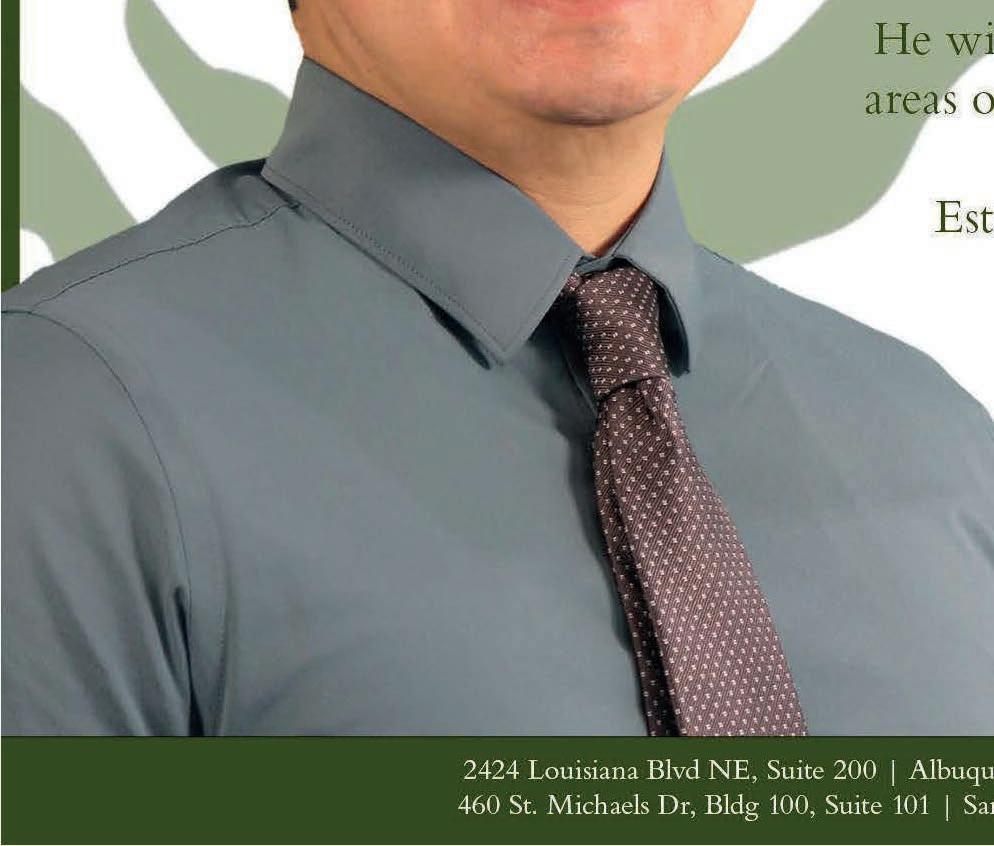

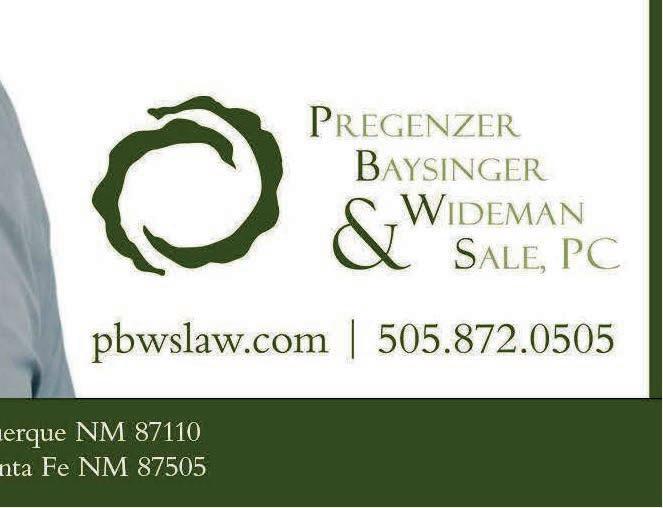
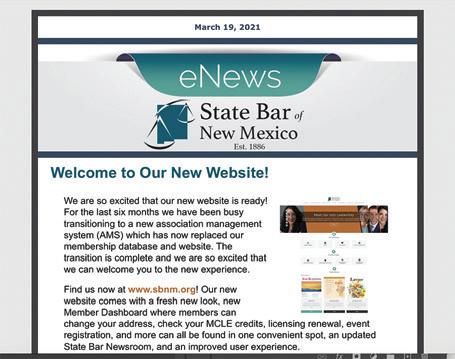
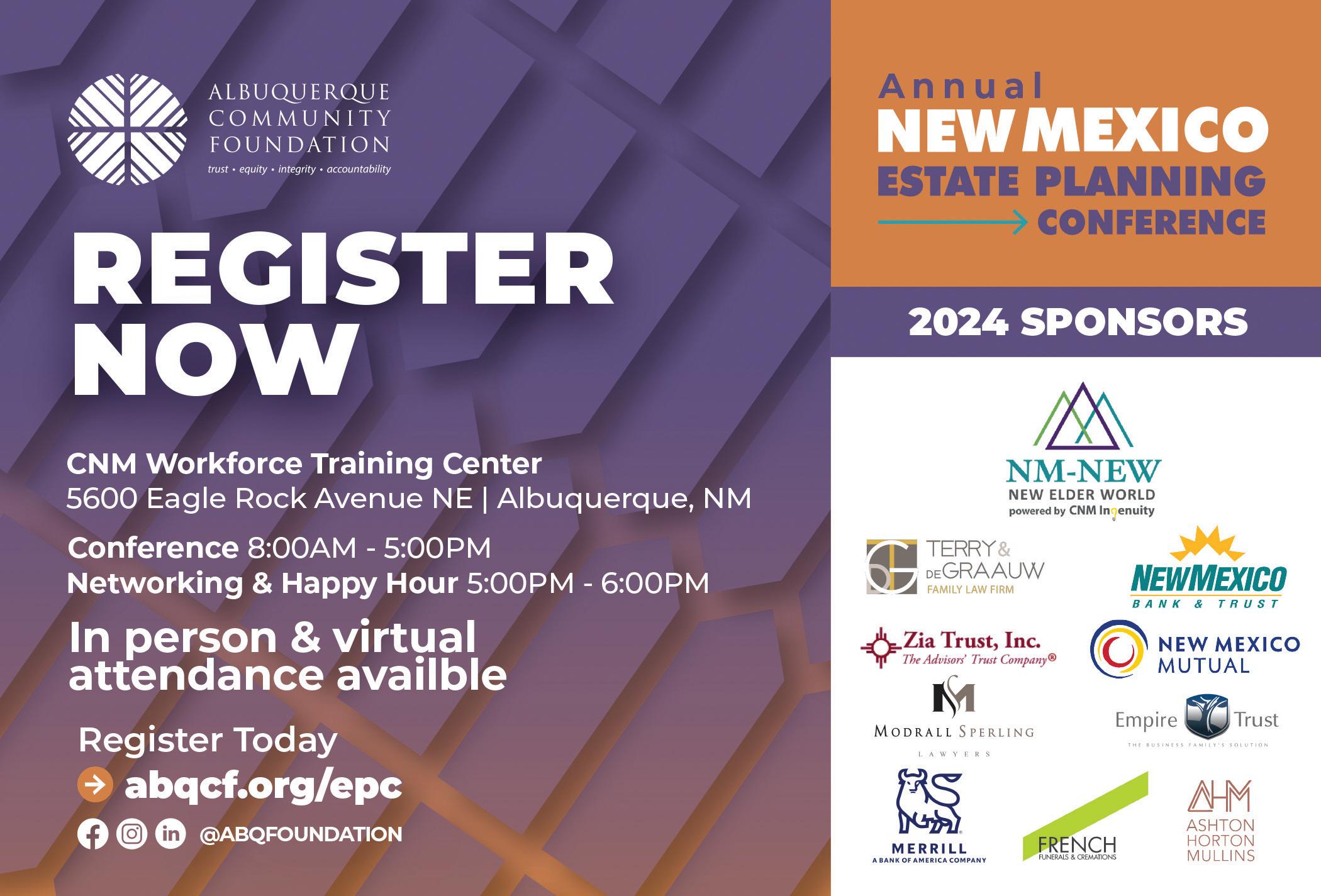

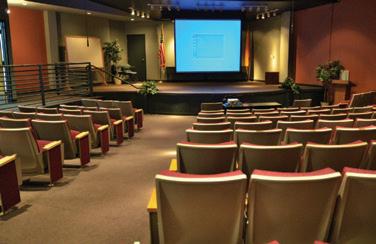




Montgomery & Andrews, P.A. is pleased to announce that Kaleb Brooks was elected a shareholder with the firm. Mr. Brooks practices in the areas of complex litigation in fields including environmental cost recovery, environmental torts, construction defect, condemnation and eminent domain, and product liability. Kaleb has litigated extensively in New Mexico state courts, the United States District Court of the District of New Mexico, and the United States Supreme Court sitting in its original jurisdiction. Kaleb is also active in the firm’s transactional practice, with a concentration on commercial lending, secured credit, and real estate.







Associate Attorney
Atkinson, Baker & Rodriguez, P.C. is a successful and established Albuquerque-based complex civil commercial and tort litigation firm seeking motivated and talented associate attorney candidates with great academic credentials. Join our small but growing focused Firm and participate in litigating cases from beginning to end with the support of our nationally recognized, experienced attorneys! Come work for a team that fosters development and growth to become a stand-out civil litigator. Highly competitive compensation and benefits. Send resumes, references, writing samples, and law school transcripts to Atkinson, Baker & Rodriguez, P.C., 201 Third Street NW, Suite 1850, Albuquerque, NM 87102 or e_info@abrfirm.com. Please reference Attorney Recruiting.
Are you ready to work at the premiere law firm in New Mexico? The Bernalillo County District Attorney’s Office is hiring 20 prosecutors! Come join our quest to do justice every day and know you are making a major difference for your community. We offer a great employment package with incredible benefits. If you work here and work hard, you will gain trial experience second to none, collaborating with some of the most seasoned trial lawyers in the state. We are hiring at all levels of experience, from Assistant District Attorneys to Deputy District Attorneys. Please apply to the Bernalillo County District’s Attorney’s Office at: https://berncoda. com/careers-internships/. Or contact us at recruiting@da2nd.state.nm.us for more information.
Priest & Miller LLP is seeking an experienced litigation attorney to join our team. Priest & Miller is a dynamic defense firm that handles complex cases involving claims of medical negligence, wrongful death, catastrophic injury, and oil and gas accidents. We are seeking attorneys with 3+ years of experience and who will thrive in a collaborative, flexible and fast paced environment. We offer highly competitive salaries and a generous benefits package. All inquiries will be kept confidential. Please email your resume to Resume@PriestMillerLaw.com.
Sutin, Thayer & Browne is seeking a fulltime Civil Litigation Associate. Experience relevant to civil litigation is preferred. Excellent legal writing, research, and verbal communication skills, required. Competitive salary and full benefits package. Visit our website https://sutinfirm.com/ to view our practice areas. Send letter of interest, resume, and writing sample to imb@sutinfirm.com.
The Third Judicial District Attorney’s Office in Las Cruces is seeking Senior Trial Attorneys, Trial Attorneys, and Assistant Trial Attorneys. You will enjoy the convenience of working in a metropolitan area while gaining valuable trial experience alongside experienced Attorney’s. Please see the full position descriptions on our website http://donaanacountyda.com/ Submit Cover Letter, Resume, and references to Whitney Safranek, Human Resources Administrator at wsafranek@da.state.nm.us
Cordell & Cordell, P.C., a domestic litigation firm with over 100 offices across 35 states, is currently seeking an experienced litigation attorney for an immediate opening in its Albuquerque, NM office. The candidate must be licensed to practice law in the state of New Mexico, have minimum of 3 years of litigation experience with 1st chair family law preferred. The position offers a $50K signing bonus, 100% employer paid premiums including medical, dental, short-term disability, longterm disability, and life insurance, as well as 401K and wellness plan. This is a wonderful opportunity to be part of a growing firm with offices throughout the United States. To be considered for this opportunity please email your resume with cover letter to Hamilton Hinton at hhinton@cordelllaw.com
THE NEW MEXICO COURT OF APPEALS is accepting applications for one or more full-time permanent Associate Staff Attorney or Assistant Staff Attorney positions. The positions may be located in either Santa Fe or Albuquerque, depending on the needs of the Court and available office space. The target pay for the Associate position is $87,813, plus generous fringe benefits. The target pay for the Assistant position is $76,848, plus generous fringe benefits. Eligibility for the Associate position requires three years of practice or judicial experience plus New Mexico Bar admission. Eligibility for the Assistant position requires one year of practice or judicial experience plus New Mexico Bar admission. Either position requires management of a heavy caseload of appeals covering all areas of law considered by the Court. Extensive legal research and writing is required. The work atmosphere is congenial, yet intellectually demanding. Interested applicants should submit a completed New Mexico Judicial Branch Resume Supplemental Form, along with a letter of interest, resume, law school transcript, and writing sample of 5-7 double-spaced pages to Cynthia Hernandez Madrid, Chief Appellate Attorney, c/o AOC Human Resources Division, aochrd-grp@ nmcourts.gov, 237 Don Gaspar Ave., Santa Fe, New Mexico 87501. Position to commence immediately and will remain open until filled. More information is available at www. nmcourts.gov/careers. The New Mexico Judicial Branch is an equal-opportunity employer.
The Federal Public Defender for the District of New Mexico is seeking experienced Assistant Federal Public Defender-Trial Attorneys in the Las Cruces office. The Federal Public Defender operates under authority of the Criminal Justice Act, 18 U.S.C. § 3006A, and provides legal representation in federal criminal cases and related matters in the federal courts. The Federal Public Defender’s Office is committed to the pursuit of justice by zealously advocating in federal courts for the constitutional rights and inherent dignity of individuals who are charged with crimes in federal court and cannot afford their own attorney. AFPDs manage varied caseloads, develop litigation strategies, prepare pleadings, appear in court at all stages of litigation, and meet with clients, experts, witnesses, family members and others. To qualify for this position, one must be a licensed attorney. Three (3) years criminal trial experience preferred. Other equally relevant experience will be considered. Applicants must have a commitment to the representation of indigent, disenfranchised and underserved individuals and communities. Incumbents should possess strong oral and written advocacy skills, have the ability to build and maintain meaningful attorney-client relationships, be team oriented but function independently in a large, busy office setting, and communicate effectively with clients, witnesses, colleagues, staff, the court, and other agency personnel. A sense of humor is a plus. Spanish language proficiency is preferred. Travel is required (training, investigation, and other case-related travel). Applicants must be graduates of an accredited law school and admitted to practice in good standing before the highest court of a state. The selected candidate must be licensed to practice in the U.S. District Court, District of New Mexico, the 10th Circuit Court of Appeals, and the U.S. Supreme Court upon entrance on duty or immediately thereafter. Applicants are expected to be or become members of the New Mexico State Bar within one year of entrance on duty. Positions are full-time with comprehensive benefits including: Health, Vision, Dental and Life Insurance, FSA/HSA, Employee Assistance Program, earned PTO/sick leave, 12 weeks of paid parental leave, 11 paid federal holidays, mandatory participation in the Federal Employees’ Retirement System, optional participation in the Thrift Savings Plan with up to 5% government matching contribution, public service loan forgiveness if qualified, and prior federal service credit. Positions are full-time with salary ranges from $72,553 to $189,771 determined by experience, qualifications, and budgetary constraints. For more information about our office, please visit https://nm.fd.org/. In one
PDF document, please submit a statement of interest, detailed resume of experience, and three references to: Margaret Katze, Federal Public Defender at FDNM-HR@fd.org . Reference in the subject line 2024-02. Closing date is 03/04/2024.
The Fifth Judicial District Attorney’s office has immediate positions open for new and/ or experienced attorneys. Salary will be based upon the New Mexico District Attorney’s Salary Schedule with salary range of an Assistant Trial Attorney ( $ 70,196.00 ) to a Senior Trial Attorney ( $82,739.00), based upon experience. Must be licensed in the United States. These positions are located in the Lovington, NM office. The office will pay for your New Mexico Bar Dues as well as the National District Attorney’s Association membership. Please send resume to Dianna Luce, District Attorney, 102 N. Canal, Suite 200, Carlsbad, NM 88220 or email to nshreve@da.state.nm.us
Attorney
Tired of billable hours? The Law Offices of Erika E. Anderson is looking for an attorney with a minimum of 3-5 years of experience. The law firm is a very busy and fast-paced AV rated firm that specializes in civil litigation on behalf of Plaintiffs. We also do Estate Planning and Probate litigation. The candidate must be highly motivated and well organized, pay close attention to detail, be willing to take on multiple responsibilities, and be highly skilled when it comes to both legal research and writing. This is a wonderful opportunity to join an incredible team that works hard and is rewarded for hard work! The position offers a great working environment, competitive salary and a generous benefits package. If interested, please send a resume to accounting@eandersonlaw.com.
The Carrillo Law Firm, P.C., located in Las Cruces, NM, is seeking an Attorney to join the firm. The firm handles complex litigation as well as day-to-day legal matters from government and private clients. Applicant must have a current license to practice law in New Mexico, and possess strong legal research and writing skills, have a positive attitude, strong work ethic, and desire to learn. We offer competitive benefits to include health insurance, profit sharing plan, and an excellent work environment. Please send letter of inter-est, resume, references, and writing sample via email to deena@ carrillolaw.org. All responses are kept confidential.
DESCRIPTION: The New Mexico Medical Board (Board) is the state agency responsible for the regulation over 10,000 licensees including medical doctors (physicians), physician assistants, anesthesiologist assistants, genetic counselors, polysomnographic technologists, naturopaths and naprapaths. The New Mexico Medical Board is accepting applications to fill the position of Prosecutor. This is an exempt, full-time position based in Santa Fe, NM. This position is responsible for prosecuting physicians and other licensees primarily for violation of the Medical Practices Act specific to unprofessional or dishonorable conduct and/or the Impaired Healthcare Provider Act. The Prosecutor will review most complaints with Board Investigators, will issue recommendations for settlement and will handle adjudications as well as some appeals. Most hearings are held in Santa Fe although they can be held anywhere in the State. The successful candidate will have a strong knowledge of regulatory processes, to include the licensing, disciplining and ensuring compliance of medical professional rules and regulations; and must have a strong knowledge of the state and federal laws/regulations applicable to the medical profession. In addition, the successful candidate must have the ability to provide strong and ethical prosecutorial representation for the Board; possess strong communication, interpersonal and legal skills; exercise sound judgment; and appropriately advise the Board’s staff on matters related to the disciplinary processes as it related to the regulation of the medical profession in New Mexico. QUALIFICATIONS: Educational requirements: NM Juris Doctorate. Experience Requirements: 5 or more years of litigation experience. Special emphasis on knowledge of the medical regulation, medical standard of care cases, and/or other professional licensure subject to the ULA is preferred but not mandatory. APPLICATION PROCESS: In order to be considered for this position, qualified candidates should send a resume, CV and cover letter to: Amanda Quintana, Interim Executive Director, New Mexico Medical Board, 2055 S. Pacheco Street, Building 400, Santa Fe, NM 87505; Phone: (505) 476-7220; Email: AmandaL.Quintana@nmmb.nm.gov
Pueblo of Laguna seeks proposals from any law firm or individual attorney practicing in NM to pro-vide legal services in cases involving child neglect or abuse and to represent the Pueblo in state cases subject to the Indian Child Welfare Act (ICWA). Reply by March 6, 2024 for first-round selection. RFP details at: www.lagunapueblo-nsn.gov/ resources/rfp-rfq/
The City of Albuquerque Legal Department is hiring for various Assistant City Attorney positions. Hybrid in person/remote work schedule available. The Legal Department’s attorneys provide a broad range of legal services to the City and represent it in legal proceedings in court and before state, federal and administrative bodies. Current open positions include: Litigation Division: The City is seeking attorneys to join its in house Litigation Division, which defends claims brought against the City; Property and Finance Division: The City is seeking an attorney to enforce traffic violations, bring code enforcement actions, and serve as counsel to the planning department and other various City departments; Real Property: The City is seeking an attorney to represent it in all aspects of its real property needs. Responsibilities include negotiating, drafting, reviewing, advising and approving commercial contracts for the sale/purchase, lease/rent, license, use, exchange, grants of easements and donation of real property. This attorney will represent the City in any related litigation and condemnation actions; Employment/Labor: The City is seeking an attorney to represent it in litigation related to employment and labor law in New Mexico State and Federal Courts, before the City of Albuquerque Personnel Board, and before the City of Albuquerque Labor Board; Utilities/ PRC: The City is seeking an attorney to represent it in matters regarding franchise and right of way agreements, public utilities, broadband and telecommunications, and will appear before the Public Regulation Commission (“PRC”); City Clerk General Counsel: The City is seeking an attorney to be general counsel for the City Clerk’s Office. Responsibilities include advising on a broad range of IPRA and OMA issues, contract review, and other duties as assigned; Air Quality: The City is seeking an attorney to serve as general counsel to the City’s Environmental Health Department (“EHD”) regarding Air Quality issues throughout Bernalillo County including at federal and state facilities. Responsibilities include participating in rulemaking and appeals, enforcement actions, and other duties as assigned. Attention to detail and strong writing and interpersonal skills are essential. Preferences include: Three (3)+ years’ experience as a licensed attorney; experience with government agencies, government compliance, litigation, contracts, and policy writing. Salary based upon experience. For more information or to apply please send a resume and writing sample to Angela Aragon at amaragon@cabq.gov.
Cavin & Ingram, P.A., a growing boutique natural resources and energy firm, is currently seeking one or more lateral partner(s) or senior associate(s) with 5 to 15 years’ experience in business, commercial, energy and/or real estate litigation or transactions. The ideal litigation candidate would be able to bring some existing clients, while stepping in to lead existing firm litigation matters and building the practice they want. The ideal transactional candidate would be able to transition their experience into drafting energy-related transactional opinions and documents. The candidate(s) must be licensed, or willing to become licensed, in the state of New Mexico, and have excellent legal writing, research, and verbal communication skills. Come join our collaborative, flexible, and relaxed work environment. To be considered for this opportunity, please email your resume to smorgan@cilawnm.com.
The Office of Governor Michelle Lujan Grisham seeks to hire a highly motivated individual to join our team as Associate or Deputy General Counsel. Duties include handling litigation matters, drafting/ analyzing legislation, IPRA compliance, and advising on various legal issues. Minimum qualifications include a Juris Doctorate degree from an accredited school of law, admission to the New Mexico Bar, and two years of relevant experience in the practice of law. Competitive salary and generous state benefits. Please submit a cover letter, resume, and list of three references to donicia. herrera@exec.nm.gov. The State of New Mexico is an Equal Opportunity Employer.
The Thirteenth Judicial District Attorney’s Office is seeking both entry level and experienced attorneys. Positions available in Sandoval, Valencia, and Cibola Counties. Enjoy the convenience of working near a metropolitan area while gaining valuable trial experience in a smaller office, providing the opportunity to advance more quickly than is afforded in larger offices. The 13th Judicial District offers flex schedules in a family friendly environment. Competitive salary starting @ 83,000+ depending on experience. Contact Krissy Fajardo @ kfajardo@da.state. nm.us or visit our website for an application @ https://www.13th.nmdas.com/ Apply as soon as possible. These positions fill fast!
The Third Judicial District Court in Las Cruces is accepting applications for a permanent, full-time Attorney Associate. Requirements include admission to the NM State Bar plus a minimum of three years experience in the practice of applicable law, or as a law clerk. Under general direction, as assigned by a judge or supervising attorney, review cases, analyze legal issues, perform legal research and writing, and make recommendations concerning the work of the Court. For a detailed job description, requirements and application/resume procedure please refer to https://www.nmcourts.gov/careers.aspx or contact Briggett Becerra, HR Administrator Senior at 575-528-8310. Open until filled.
The First Judicial District Attorney’s Office has an opening available for a Senior Trial Attorney prosecuting drug trafficking and distribution cases pursuant to the High Intensity Drug Trafficking Area (HIDTA) federal grant. The HIDTA attorney is responsible for managing the HIDTA grant including maintaining case statistics, and preparing quarterly and annual reports. This is a Term position based upon availability of funding. The office also has an opening for an entry level Assistant Trial Attorney to handle DUI and/or Domestic Violence cases. Salary is based on experience and the District Attorney Personnel and Compensation Plan. Please send resume and letter of interest to: “DA Employment,” PO Box 2041, Santa Fe, NM 87504, or via e-mail to 1stDA@da.state.nm.us.
The New Mexico Department of Information Technology (DoIT) is seeking an Assistant General Counsel who will provide legal compliance advice and guidance concerning federal and state laws. The attorney is expected to perform the highest level of legal services and have expert level proficiency with legal research, analysis, and drafting. This attorney will be responsible for drafting and administering regulations, contracts, intergovernmental agreements, supporting leadership with legislative matters and implementation of all statutory requirements. $77,354 - $139,238 annually depending on experience and qualifications. To apply please visit the New Mexico State Personnel website at: www.spo.state.nm.us. For additional information or questions contact Melissa Gutierrez at melissa.gutierrez@doit.nm.gov.
www.sbnm.org
The New Mexico Court of Appeals is seeking its next Clerk of the Court. The Clerk of the Court is a licensed attorney who works closely with the Judges to oversee the management and administrative functions of the Court. Under the general direction of the Chief Judge, the position is responsible for allocating resources in a manner that maximizes efficiency in operations and enhances service to the public. The position is the Court’s main point of contact for legal practitioners and the public and is responsible for communicating with attorneys and litigants. The Clerk of the Court rules on procedural motions and issues orders under delegated authority, evaluates cases for jurisdiction and timeliness, closes cases by issuing mandates, and performs research and analysis to make legal recommendations to the judges and staff, among a variety of other duties. The Court of Appeals has offices in Santa Fe and Albuquerque with regular travel between the offices required. The position may be primarily located in either location. Required experience: (1) six years of advanced level management involving administrative matters such as budget, finance, procurement, human resources or contracts; (2) six years practicing law as an attorney or law clerk, at least three of which involved appellate practice; and (3) three years supervising and managing a diverse staff. The salary range is $98,463 - $196,924 annually. Interested applicants should submit a New Mexico Judicial Branch Application for Employment, or a Resume and a Resume Supplemental form to: jobs@nmcourts.gov, AOC Human Resources Division, 202 E. Marcy Street, Santa Fe, New Mexico 87501. To view the complete job description and obtain the Judicial Branch Application for Employment or Resume Supplemental form, interested applicants should visit www. nmcourts.gov/careers. The New Mexico Judicial Branch is an equal-opportunity employer.
The New Mexico Department of Justice is committed to recruiting high quality assistant attorney generals who are passionate about serving the citizens of New Mexico. There are opportunities in the following divisions: Civil Rights, Consumer Protection, Environmental Protection, Special Prosecutions, Criminal Appeals, Civil Appeals, Government Litigation and Government Counsel and Accountability. The New Mexico Department of Justice is an equal opportunity employer, and we encourage applicants from all backgrounds to apply. To apply please visit the State Personnel website at www.spo.state.nm.us. For additional job opportunities please visit our website at www. nmag.gov. If you have questions, please reach out to Dean Woulard at dwoulard@nmag.gov.
The Eleventh Judicial District Attorney’s Office, Div. II, in Gallup, New Mexico, McKinley County is seeking applicants for Assistant Trial Attorneys, Trial Attorneys and Senior Trial Attorneys. You will enjoy working in a community with rich culture and history while gaining in-valuable experience and making a difference. The McKinley County District Attorney’s Office provides regular courtroom practice, supportive and collegial work environment. You are a short distance away from Albuquerque, Southern parts of Colorado, Farmington, and Arizona. We offer an extremely competitive salary and benefit package. Salary commensurate with experience. These positions are open to all licensed attorneys who are in good standing with the bar within or without the State of New Mexico. Please Submit resume to District Attorney Bernadine Martin, 201 West Hill, Suite 100, Gallup, NM 87301, or e-mail letter to Bmartin@da.state.nm.us. Position to commence immediately and will remain open until filled.
The Eleventh Judicial District Attorney’s Office, Div. II, in Gallup, New Mexico, McKinley County is seeking applicants for a Contract Prosecutor to assist in the prosecution of criminal misdemeanor cases, felony cases and conflict of interest cases. The Contract Prosecutor position requires substantial knowledge and experience in criminal prosecution, rules of evidence and rules of criminal procedure; trial skills; the ability to draft legal documents and to re-search/analyze information and situations and the ability to work effectively with other criminal justice agencies and Law Enforcement. This position is open to all attorneys who have knowledge in criminal law and who are in good standing with the New Mexico Bar. Limited License is okay. Salary will result in a contractual agreement between the contract prosecutor and the District Attorney. Submit letter of interest and resume to District Attorney Bernadine Martin, 201 West Hill, Suite 100, Gallup, NM 87301, or e-mail letter to bmartin@da.state.nm.us.
Mid- size downtown Defense firm looking for Experienced Associate Attorney in Civil Rights, Employment Law, Complex and General Liability. Excellent benefits. Pay at high end of range based on experience. Congenial and easy-going firm. Please contact Karen Arrants at Stiff, Garcia & Associates, KArrants@stifflaw.com
The First Judicial District Attorney’s Office is seeking a Trial Attorney located in the Santa Fe Office. Salary is based on experience and the District Attorney Personnel and Compensation Plan. Please send resume and letter of interest to: “DA Employment,” PO Box 2041, Santa Fe, NM 87504, or via e-mail to 1stDA@da.state.nm.us.
AV rated insurance defense firm seeks fulltime legal assistant. Position requires a team player with strong word processing and organizational skills. Proficiency with Word, knowledge of court systems and superior clerical skills are required. Should be skilled, attentive to detail and accurate. Excellent work environment, salary, private pension, and full benefits. Please submit resume to mvelasquez@rileynmlaw.com or mail to 3880 Osuna Rd. NE, Albuquerque, NM 87109
The Moses Law Firm has an immediate opening for a full-time Business Manager with at least five years’ experience in an accounting or law firm administration role. If you are seeking a challenging position in a thriving firm, we are looking for you! The firm provides a collegial and collaborative environment from the top down. We are an AV Preeminent® firm serving New Mexico clients for 70 years and the only New Mexico firm invited to be a member of Meritas®, a global alliance of leading independent law firms and the world’s premier legal network. Candidates must have a working knowledge of basic bookkeeping principles, strong computer skills, and the ability to prioritize and perform multiple tasks. Experience with QuickBooks is desirable. The Firm offers a competitive compensation and benefits package. Please send your letter of interest, resume and salary requirement to Lucas N. Frank at lucas@moseslaw.com.
The Valle, O’Cleireachain, Zamora and Harris law firm seeks an experienced paralegal who has the ability to multi-task. Qualified candidates should have experience with calendaring, subrogation, drafting discovery and pleadings, and be comfortable with direct client contact. The VOZH Law Firm offers excellent benefits, including a matching 401k, paid health and dental insurance, PTO and sick leave. Work Schedule is Monday through Thursday 8:30 – 5pm, Friday 8:30 to 12pm. Salary is commensurate with experience. Interested candidates should submit their resume to ao@vozhlaw.com.
www.sbnm.org
Our long-time Firm Administrator/ Paralegal is retiring and we are seeking a replacement. The position involves fullcharge bookkeeping (accounts payable, billing, including through insurance carrier audit houses, and accounts receivable). Experience with Timeslips, QuickBooks, Microsoft Office, WordPerfect and Adobe are required. The Firm Administrator also performs basic IT troubleshooting, interacts with accounting, banking and insurance professionals, coordinates with vendors and suppliers of office services, and performs other administrative duties. The Paralegal portion of the position involves light collections work, supporting attorneys in preparing EEOC/ HRB and other employment-related agency responses, and occasional support of other paralegals in litigation matters. A commercial transactions and real estate background would be a plus. Knowledge of federal and state court rules is required. The successful applicant must be able to multi-task and have a sense of humor. Our benefits package is extremely generous and includes PTO, health, dental, life and long-term disability insurance, and a 401(k) plan. Anticipated start date would be April 1, 2024 but could be earlier. Serious and qualified applicants only please submit resumes to csalazar@wwwlaw.us.
Court of AppealsAppellate Paralegal
The New Mexico Court of Appeals seeks an appellate paralegal. The position may be located in either Albuquerque or Santa Fe. As a Court paralegal, you will perform technical analyses, editing, proofreading and formatting of Court opinions. This entails citation checks, ensuring cited cases stand for the stated proposition, and ensuring record citations accurately represent the facts. You will be part of a team that works to issue high quality opinions and orders in a timely fashion. You may also provide administrative support to judges and/or attorneys and draft and docket legal documents. Excellent writing skills, knowledge of legal terminology, and attention to detail are essential. Current annual salary is $76,302 with generous benefits. To apply and see the full job posting, including educational and experience requirements, go to: www.nmcourts.gov/ careers and click on the Court of Appeals “Appellate Paralegal” listing.
The New Mexico Court of Appeals (AOC) is recruiting for 1- Court Manager 1 or 2 #00053523. Position Location: Albuquerque or Santa Fe, NM. Pay Range: $23.092 - $52.533 hourly OR $48,031.36 - $ 109,268.64 annually Extensive Benefits Package. To apply and review the job description: https://www.nmcourts.gov/ careers/ Equal Opportunity Employer
The City of Albuquerque Legal Department is seeking a Paralegal to assist an assigned attorney or attorneys in performing substantive administrative legal work from time of inception through resolution and perform a variety of paralegal duties, including, but not limited to, performing legal research, managing legal documents, assisting in the preparation of matters for hearing or trial, preparing discovery, drafting pleadings, setting up and maintaining a calendar with deadlines, and other matters as assigned. Excellent organization skills and the ability to multitask are necessary. Must be a team player with the willingness and ability to share responsibilities or work independently. Starting salary is $25.54 per hour during an initial, proscribed probationary period. Upon successful completion of the proscribed probationary period, the salary will increase to $26.80 per hour. Competitive benefits provided and available on first day of employment. Please apply at https://www. governmentjobs.com/careers/cabq.
Busy commercial litigation and intellectual property firm seeks full time legal assistant, preferably with experience operating trial software in the courtroom. Candidate will be expected to be reliable, well-organized, take initiative, work well with others, work in a fast-paced environment, and have strong written and oral communication skills. The candidate will support paralegals and attorneys with case management, document management, calendaring, data entry, share responsibility for reception duties, and provide other support as needed. Proficiency in MS Office a must. Knowledge of legal software a plus. Salary commensurate with experience. Email resume w/cover letter and references to nan-cy@bardackeallison.com.
Paralegal
Tired of billable hours? The Law Offices of Erika E. Anderson is looking for an experienced litigation paralegal for a very busy and fast-paced firm of four (4) attorneys. The candidate must be highly motivated and well organized, pay close attention to detail, be willing to take on multiple responsibilities, and be highly skilled when it comes to both computer software and written communication. Tasks will include, but are not limited to, filing pleadings in State and Federal Court; drafting simple motions; drafting, answering, and responding to discovery; subrogation negotiations; and communicating with opposing counsel and the Court. This is a wonderful opportunity to join an incredible team that works hard and is rewarded for hard work! The position offers a great working environment, benefits, and a competitive salary. If interested, please send a resume to accounting@eandersonlaw.com.
Office Suites-No Lease-All Inclusive
Office Suites-NO LEASE-ALL INCLUSIVEvirtual mail, virtual telephone reception service, hourly offices and conference rooms available. Witness and notary services. Office Alternatives provides the infrastructure for attorney practices so you can lower your overhead in a professional environment. 2 convenient locations-Journal Center and Riverside Plaza. 505-796-9600/ officealternatives.com.
For Sale- Complete set of Bound New Mexico Reports
For Sale- Complete set of Bound New Mexico Reports Volumes 1-150 (1852-2011) and New Mexico Appellate Reports Volumes 1-6 (2012-2014). Beautiful addition to any law library. $3,000.00 OBO. Lock Law Offices (505)-880-1200.
The Bar Bulletin publishes twice a month on the second and fourth Wednesday. Advertising submission deadlines are also on Wednesdays, three weeks prior to publishing by 4 pm.
Advertising will be accepted for publication in the Bar Bulletin in accordance with standards and ad rates set by publisher and subject to the availability of space. No guarantees can be given as to advertising publication dates or placement although every effort will be made to comply with publication request. The publisher reserves the right to review and edit ads, to request that an ad be revised prior to publication or to reject any ad. Cancellations must be received by 10 a.m. on Thursday, three weeks prior to publication.
For more advertising information, contact: Marcia C. Ulibarri at 505-797-6058 or email marcia.ulibarri@sbnm.org

The First Judicial District Court's Access to Justice Committee recognizes and thanks all of the volunteers who generously gave their time and effort to help hundreds of pro se litigants in 2023. The Committee appreciates those attorneys who served as guardians ad litem, settlement facilitators in the Court's ADR program or during Resolution Days, or as volunteers at one of the Court's Free Legal Teleclinics and In-Person Free Legal Fairs. Without each of you, the Court would not be able to provide the services that help to ensure equal access to justice for more New Mexicans.
Judge
Francis J. Mathew
Judge
Maria Sanchez-Gagne
Judge
Shannon Broderick
Bulman
Judge
Sylvia LaMar (Ret.)
Judge
Jason Lidyard
Judge
T. Glenn Ellington
Chief Judge
Bryan Biedscheid
Judge
Mary L. Marlowe Sommer
Judge
Matthew J. Wilson
Judge
Kathleen McGarry
Ellenwood

I love LawPay! I’m not sure why I waited so long to get it set up.
–
Trusted by more than 150,000 professionals, LawPay is a simple, secure solution that allows you to easily accept credit and eCheck payments online, in person, or through your favorite practice management tools.

Vetted
62%



